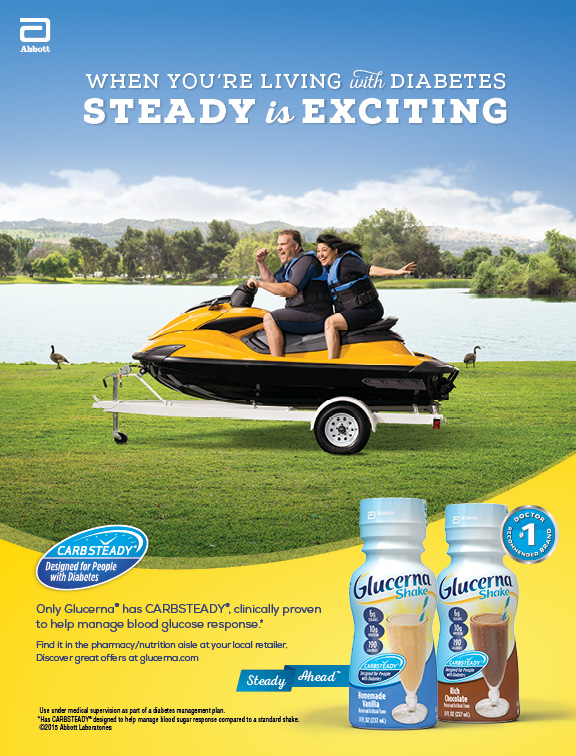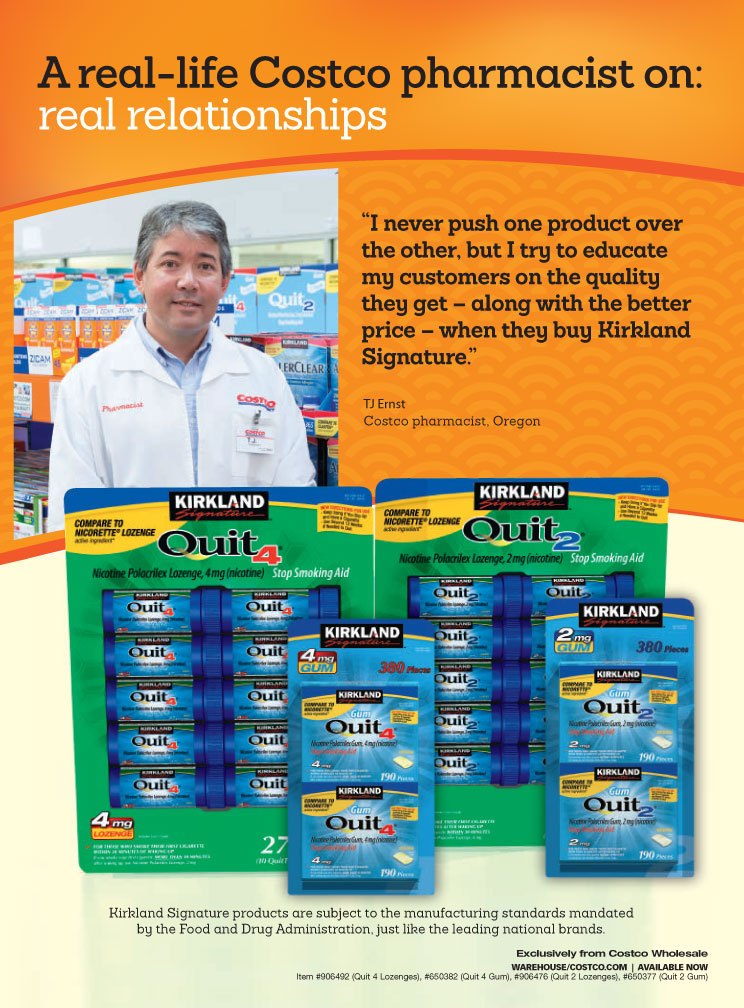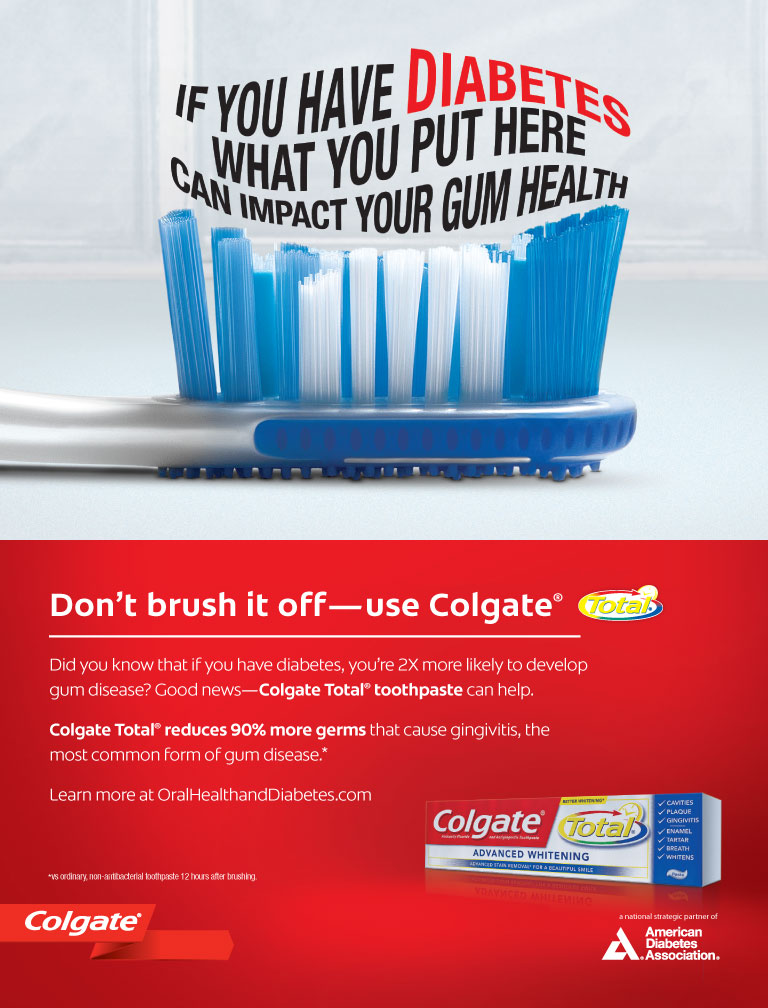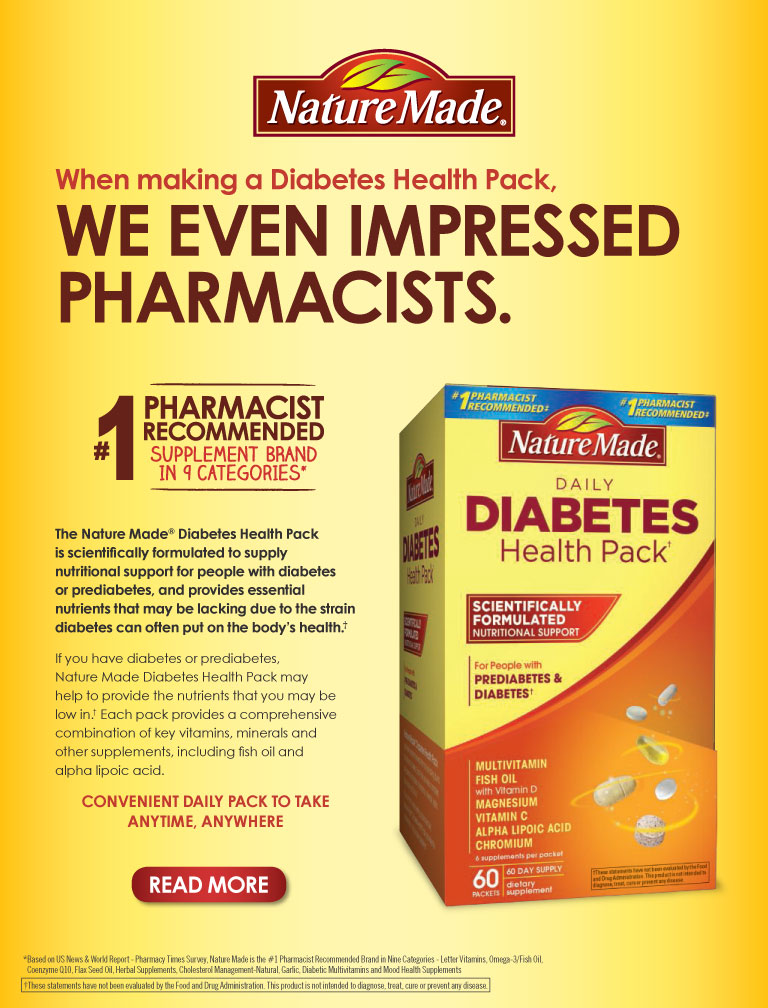
A new study sheds light?on this dangerous combination. High blood pressure, heart disease and stroke are just some of the problems that obesity can cause. Diabetes can also result from obesity and, if left untreated, can lead to problems like heart disease, vision loss, kidney disease and nerve damage. If obesity and diabetes exist together, could they be a deadly duo? A recent study based on the National Health Interview Survey (NHIS) looked at this question to see if being obese and having diabetes can pose a greater risk of death than being obese and not having diabetes. The NHIS study followed a large group of U.S.-born black and non-Hispanic white study members for about 10 years. Study members were placed into five groups based on their body mass index (BMI), so it was easy to see which members were obese. Study members who had?diabetes, no matter what their BMI was, had a greater risk of death. The obese study members also had a greater risk of death and lower quality of life than those who were not obese, whether they had diabetes or not. Tips For Staying Healthy Eating plenty of fruits, vegetables and lean protein, and limiting the amount of sugary and fatty foods in your diet are great ways to start improving your health. Being active for 30 minutes most days of the week can help you keep your weight within a healthy range. At the same time, you’ll be keeping your heart healthy and lowering your risk of heart disease and diabetes. Even if you already have diabetes, the same rules apply. Eating a balanced diet of high-fiber and high-protein foods, such as whole grains, fruits, vegetables, lean meats, and low-fat dairy products, will keep you fuller longer and will keep your sweet tooth in check. By eating healthy and?staying active, you can?keep your diabetes under?control, spend less time at?your healthcare provider’s?office, and increase the?amount of time you spend?enjoying a healthy life. What does this mean for me? Whether you have diabetes or not, eating a healthy?diet and staying active can help keep your weight?within a healthy range. Keeping your BMI below the?obesity marker of 30 will lower your risk of diabetes?and other health problems, such as high blood?pressure and stroke. If you have diabetes, following?a healthy eating plan and staying active will help?you manage your blood glucose levels and protect?against any additional health problems. By Amy Campbell MS, RD, LDN, CDE
The post Obesity And Diabetes: A Deadly Duo appeared first on Spring 2016 Issue | CDiabetes Online Magazine.
]]>
The post Obesity And Diabetes: A Deadly Duo appeared first on Spring 2016 Issue | CDiabetes Online Magazine.
]]>
The post No Charge OneTouch? Meter Coupon appeared first on Spring 2016 Issue | CDiabetes Online Magazine.
]]>
The post No Charge OneTouch? Meter Coupon appeared first on Spring 2016 Issue | CDiabetes Online Magazine.
]]>
In order to live an active and mobile lifestyle, it is important to positively promote your joint health. So, what is joint health? The joint is where our bones connect and it is a complex structure of many specialized tissues that function together to provide the means for motion. Inside the joint, there is cartilage and viscous fluid. The cartilage is resilient with tremendous shock absorbing capability while the viscous fluid bathes and lubricates the joint. As a consequence of aging, trauma, and wear and tear on the joint, cartilage may be broken down, which can compromise joint movement. In order to remain active and live a healthy lifestyle, it is critically important to take care of your joints. How can I promote joint health? There are many ways to promote your joint health such as: eating healthy staying active and maintaining a healthy weight visiting your healthcare provider regularly taking your medications as prescribed taking dietary supplements You should also consider taking a high quality glucosamine and chondroitin sulfate supplement. Glucosamine, in combination with chondroitin sulfate, helps inhibit enzymes responsible for the breakdown of cartilage and supports the maintenance of healthy joints. Choosing the right glucosamine/chondroitin product Recent published clinical studies have further validated the combination of high quality glucosamine/chondroitin supplementation for joint health. It is important to make sure you purchase a high quality glucosamine/chondroitin combination product, and below are some of the items to look for: Reputable brand cited in published clinical studies Serving size of trademarked active ingredients are the same as used in clinical studies Quality seal from third party public health and safety organizations Take away message It is important to closely monitor and take care of your joints to remain active late in life. It is recommended to consult your physician before taking any medication or dietary supplement.
The post Introduction to Joint Health appeared first on Spring 2016 Issue | CDiabetes Online Magazine.
]]>
In order to live an active and mobile lifestyle, it is important to positively promote your joint health. So, what is joint health? The joint is where our bones connect and it is a complex structure of many specialized tissues that function together to provide the means for motion. Inside the joint, there is cartilage and viscous fluid. The cartilage is resilient with tremendous shock absorbing capability while the viscous fluid bathes and lubricates the joint. As a consequence of aging, trauma, and wear and tear on the joint, cartilage may be broken down, which can compromise joint movement. In order to remain active and live a healthy lifestyle, it is critically important to take care of your joints.
How can I promote joint health?
There are many ways to promote your joint health such as:
- eating healthy
- staying active and maintaining a healthy weight
- visiting your healthcare provider regularly
- taking your medications as prescribed
- taking dietary supplements
You should also consider taking a high quality glucosamine and chondroitin sulfate supplement. Glucosamine, in combination with chondroitin sulfate, helps inhibit enzymes responsible for the breakdown of cartilage and supports the maintenance of healthy joints.
Choosing the right glucosamine/chondroitin product
Recent published clinical studies have further validated the combination of high quality glucosamine/chondroitin supplementation for joint health. It is important to make sure you purchase a high quality glucosamine/chondroitin combination product, and below are some of the items to look for:
- Reputable brand cited in published clinical studies
- Serving size of trademarked active ingredients are the same as used in clinical studies
- Quality seal from third party public health and safety organizations
Take away message
It is important to closely monitor and take care of your joints to remain active late in life. It is recommended to consult your physician before taking any medication or dietary supplement.
The post Introduction to Joint Health appeared first on Spring 2016 Issue | CDiabetes Online Magazine.
]]>
Bring this ad to your Costco pharmacist for your free meter.
The post Free Bayer Contour?Next Meter Coupon appeared first on Spring 2016 Issue | CDiabetes Online Magazine.
]]>
Bring this ad to your Costco pharmacist for your free meter.
Click here to download this ad

The post Free Bayer Contour?Next Meter Coupon appeared first on Spring 2016 Issue | CDiabetes Online Magazine.
]]>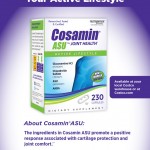
The post Cosamin ? ASU for Joint Health appeared first on Spring 2016 Issue | CDiabetes Online Magazine.
]]>
The post Cosamin ? ASU for Joint Health appeared first on Spring 2016 Issue | CDiabetes Online Magazine.
]]>
If your heart could choose where you?should live, it might tell you to move to?one of the lovely countries that border?the Mediterranean Sea. The level of?heart disease there is much lower than?other places in the world. Why? Experts?believe that the Mediterranean style of eating?protects against heart disease. And it may?offer even more: Studies show that this way?of eating may also lower the risk of some?types of cancer, obesity and type 2 diabetes.?It may even help prevent Parkinson’s and?Alzheimer’s diseases. The good news is that you don’t have to?pack up and move to Greece or Italy. You?can follow the Mediterranean way of eating?in your very own home. All you need to do?is follow the Mediterranean Diet Pyramid,?adjusting the size of the servings to meet your?daily needs. Read on for more details on how?to fill your plate the Mediterranean way. EVERY MAIN MEAL Eat one or two servings of fruit.?A serving is a small piece of fruit, ? cup?of berries or 17 grapes. Choose fresh fruit?instead of juice or fruit canned in syrup. If?you worry that fruit may raise your blood?glucose level too high, try those that have?a lower glycemic index (GI) value. The?natural sugar found in foods with a lower?GI value enters the bloodstream more?slowly. Good choices include apples,?oranges, strawberries and blueberries. Eat two servings of vegetables (at?least one should be raw). A serving is?? cup cooked or 1 cup of raw vegetables.?You can even fit veggies into your breakfast?menu: Try drinking a glass of low sodium?tomato juice to start your?day. Add tomatoes, onions?and peppers to an?omelet or scrambled?eggs. As your day?goes on, enjoy?more vegetable juice, salads and cooked,?steamed or raw vegetables. Vegetable-rich?soups are great, too. Eat one or two servings of foods that?contain fiber-rich grains. These include?whole grain bread, pasta, rice or couscous.?One serving of a grain food is one slice?(1 ounce) of bread or 1/3 cup of cooked?pasta, rice or couscous. The whole grain?versions of these foods provide a lot?of healthy nutrients that are?lost when the fiber?is taken out. EVERY DAY Drink plenty of water. Some people?need to drink more than others, but?everyone needs to drink some. When?you are well hydrated, your body?will function better. Seltzer water?and herbal tea count as water, too. Eat two servings of low-fat dairy in?the form of milk, yogurt or cheese.?These all help make your bones stronger.?Remember that milk and yogurt are?considered to be carbohydrate-based foods?(one serving is 8 ounces of milk or ? cup?yogurt), while cheese is a protein food. Enjoy olives, nuts and seeds. If you?combine these heart-healthy foods?with different spices, you can make?your Mediterranean Diet meals quite?tasty. If you wish to lose some weight, limit?the amount you eat from this group,?as these foods are high in fat and calories. Use olive oil as your main fat choice.?Olive oil helps lower the LDL (bad)?cholesterol that clogs blood vessels. Olive?oil is rich in calories, so use it in smaller?amounts. The best type to use is extra?virgin. It also has the richest flavor, so you?don’t need to use a lot. Enjoy some wine. A small amount of?wine each day may help lower your risk of?heart disease. Women should limit their?daily intake to one glass (5 ounces). Men?should limit their daily intake to no more?than two glasses (10 ounces). Don’t drink?wine if you have a problem with alcohol,?or if your healthcare provider tells you?that it is not safe for you to do so. WEEKLY Eat two or more servings of?fish, two servings of lean meat?and two to four servings of?eggs. All of these are great sources of?protein. Fish and seafood are rich in heart-healthy?fats. Vegetable oil, nuts and fish?contain heart-healthy omega-3 fatty acids,?which help lower triglycerides (a type of?blood fat), help make your blood vessels?healthier, and may help prevent heart?attacks. Try to avoid processed meat.?Processed meat includes hot dogs,?bacon and cold cuts. These foods?are high in sodium and, often,?unhealthy saturated fat. If you must?have some, limit your intake to no?more than one serving per week. Eat two or more servings of legumes,?such as beans, peas and lentils. These?protein-rich foods are cholesterol-free, high?in fiber and tend to be low in fat. Legumes?contain carbohydrates, as well, so be sure to?count them as one of your carb choices in?your eating plan. One serving of legumes?is ? cup. Limit your intake of potatoes.?Experts who studied the value of the?Mediterranean Diet in people who?have diabetes asked them not to eat?any potatoes. But if you wish to have some,?limit your servings to three or fewer. Limit your sweets. Have two or fewer?servings of sweets, such as cookies, ice?cream and candy each week. WHAT ELSE CAN YOU DO? The Mediterranean?Diet also encourages?several non-food?actions: daily?physical activity, rest?and good times with friends. How you?live your life affects?your heart and other?areas of your body.?If you get plenty of?rest, and are social?and active, your?stress level will be?lower. This way of eating?and living may differ?from how you live?right now, but you?and your heart may?find it worthwhile. By Janis Roszler, MSFT, RD, CDE, LD/N
The post Eat A Heart Healthy Diet appeared first on Spring 2016 Issue | CDiabetes Online Magazine.
]]>
If your heart could choose where you?should live, it might tell you to move to?one of the lovely countries that border?the Mediterranean Sea. The level of?heart disease there is much lower than?other places in the world. Why? Experts?believe that the Mediterranean style of eating?protects against heart disease. And it may?offer even more: Studies show that this way?of eating may also lower the risk of some?types of cancer, obesity and type 2 diabetes.?It may even help prevent Parkinson’s and?Alzheimer’s diseases.
The good news is that you don’t have to?pack up and move to Greece or Italy. You?can follow the Mediterranean way of eating?in your very own home. All you need to do?is follow the Mediterranean Diet Pyramid,?adjusting the size of the servings to meet your?daily needs. Read on for more details on how?to fill your plate the Mediterranean way.
EVERY MAIN MEAL
![]() Eat one or two servings of fruit.?A serving is a small piece of fruit, ? cup?of berries or 17 grapes. Choose fresh fruit?instead of juice or fruit canned in syrup. If?you worry that fruit may raise your blood?glucose level too high, try those that have?a lower glycemic index (GI) value. The?natural sugar found in foods with a lower?GI value enters the bloodstream more?slowly. Good choices include apples,?oranges, strawberries and blueberries.
Eat one or two servings of fruit.?A serving is a small piece of fruit, ? cup?of berries or 17 grapes. Choose fresh fruit?instead of juice or fruit canned in syrup. If?you worry that fruit may raise your blood?glucose level too high, try those that have?a lower glycemic index (GI) value. The?natural sugar found in foods with a lower?GI value enters the bloodstream more?slowly. Good choices include apples,?oranges, strawberries and blueberries.

![]() Eat two servings of vegetables (at?least one should be raw). A serving is?? cup cooked or 1 cup of raw vegetables.?You can even fit veggies into your breakfast?menu: Try drinking a glass of low sodium?tomato juice to start your?day. Add tomatoes, onions?and peppers to an?omelet or scrambled?eggs. As your day?goes on, enjoy?more vegetable juice, salads and cooked,?steamed or raw vegetables. Vegetable-rich?soups are great, too.
Eat two servings of vegetables (at?least one should be raw). A serving is?? cup cooked or 1 cup of raw vegetables.?You can even fit veggies into your breakfast?menu: Try drinking a glass of low sodium?tomato juice to start your?day. Add tomatoes, onions?and peppers to an?omelet or scrambled?eggs. As your day?goes on, enjoy?more vegetable juice, salads and cooked,?steamed or raw vegetables. Vegetable-rich?soups are great, too.
![]() Eat one or two servings of foods that?contain fiber-rich grains. These include?whole grain bread, pasta, rice or couscous.?One serving of a grain food is one slice?(1 ounce) of bread or 1/3 cup of cooked?pasta, rice or couscous. The whole grain?versions of these foods provide a lot?of healthy nutrients that are?lost when the fiber?is taken out.
Eat one or two servings of foods that?contain fiber-rich grains. These include?whole grain bread, pasta, rice or couscous.?One serving of a grain food is one slice?(1 ounce) of bread or 1/3 cup of cooked?pasta, rice or couscous. The whole grain?versions of these foods provide a lot?of healthy nutrients that are?lost when the fiber?is taken out.
EVERY DAY
![]() Drink plenty of water. Some people?need to drink more than others, but?everyone needs to drink some. When?you are well hydrated, your body?will function better. Seltzer water?and herbal tea count as water, too.
Drink plenty of water. Some people?need to drink more than others, but?everyone needs to drink some. When?you are well hydrated, your body?will function better. Seltzer water?and herbal tea count as water, too.
![]() Eat two servings of low-fat dairy in?the form of milk, yogurt or cheese.?These all help make your bones stronger.?Remember that milk and yogurt are?considered to be carbohydrate-based foods?(one serving is 8 ounces of milk or ? cup?yogurt), while cheese is a protein food.
Eat two servings of low-fat dairy in?the form of milk, yogurt or cheese.?These all help make your bones stronger.?Remember that milk and yogurt are?considered to be carbohydrate-based foods?(one serving is 8 ounces of milk or ? cup?yogurt), while cheese is a protein food.
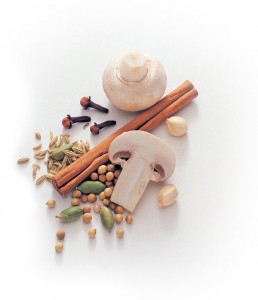
![]() Enjoy olives, nuts and seeds. If you?combine these heart-healthy foods?with different spices, you can make?your Mediterranean Diet meals quite?tasty. If you wish to lose some weight, limit?the amount you eat from this group,?as these foods are high in fat and calories.
Enjoy olives, nuts and seeds. If you?combine these heart-healthy foods?with different spices, you can make?your Mediterranean Diet meals quite?tasty. If you wish to lose some weight, limit?the amount you eat from this group,?as these foods are high in fat and calories.
![]() Use olive oil as your main fat choice.?Olive oil helps lower the LDL (bad)?cholesterol that clogs blood vessels. Olive?oil is rich in calories, so use it in smaller?amounts. The best type to use is extra?virgin. It also has the richest flavor, so you?don’t need to use a lot.
Use olive oil as your main fat choice.?Olive oil helps lower the LDL (bad)?cholesterol that clogs blood vessels. Olive?oil is rich in calories, so use it in smaller?amounts. The best type to use is extra?virgin. It also has the richest flavor, so you?don’t need to use a lot.
![]() Enjoy some wine. A small amount of?wine each day may help lower your risk of?heart disease. Women should limit their?daily intake to one glass (5 ounces). Men?should limit their daily intake to no more?than two glasses (10 ounces). Don’t drink?wine if you have a problem with alcohol,?or if your healthcare provider tells you?that it is not safe for you to do so.
Enjoy some wine. A small amount of?wine each day may help lower your risk of?heart disease. Women should limit their?daily intake to one glass (5 ounces). Men?should limit their daily intake to no more?than two glasses (10 ounces). Don’t drink?wine if you have a problem with alcohol,?or if your healthcare provider tells you?that it is not safe for you to do so.
WEEKLY
![]() Eat two or more servings of?fish, two servings of lean meat?and two to four servings of?eggs. All of these are great sources of?protein. Fish and seafood are rich in heart-healthy?fats. Vegetable oil, nuts and fish?contain heart-healthy omega-3 fatty acids,?which help lower triglycerides (a type of?blood fat), help make your blood vessels?healthier, and may help prevent heart?attacks.
Eat two or more servings of?fish, two servings of lean meat?and two to four servings of?eggs. All of these are great sources of?protein. Fish and seafood are rich in heart-healthy?fats. Vegetable oil, nuts and fish?contain heart-healthy omega-3 fatty acids,?which help lower triglycerides (a type of?blood fat), help make your blood vessels?healthier, and may help prevent heart?attacks.

![]() Try to avoid processed meat.?Processed meat includes hot dogs,?bacon and cold cuts. These foods?are high in sodium and, often,?unhealthy saturated fat. If you must?have some, limit your intake to no?more than one serving per week.
Try to avoid processed meat.?Processed meat includes hot dogs,?bacon and cold cuts. These foods?are high in sodium and, often,?unhealthy saturated fat. If you must?have some, limit your intake to no?more than one serving per week.
![]() Eat two or more servings of legumes,?such as beans, peas and lentils. These?protein-rich foods are cholesterol-free, high?in fiber and tend to be low in fat. Legumes?contain carbohydrates, as well, so be sure to?count them as one of your carb choices in?your eating plan. One serving of legumes?is ? cup.
Eat two or more servings of legumes,?such as beans, peas and lentils. These?protein-rich foods are cholesterol-free, high?in fiber and tend to be low in fat. Legumes?contain carbohydrates, as well, so be sure to?count them as one of your carb choices in?your eating plan. One serving of legumes?is ? cup.
![]() Limit your intake of potatoes.?Experts who studied the value of the?Mediterranean Diet in people who?have diabetes asked them not to eat?any potatoes. But if you wish to have some,?limit your servings to three or fewer.
Limit your intake of potatoes.?Experts who studied the value of the?Mediterranean Diet in people who?have diabetes asked them not to eat?any potatoes. But if you wish to have some,?limit your servings to three or fewer.
![]() Limit your sweets. Have two or fewer?servings of sweets, such as cookies, ice?cream and candy each week.
Limit your sweets. Have two or fewer?servings of sweets, such as cookies, ice?cream and candy each week.
WHAT ELSE CAN YOU DO?
 The Mediterranean?Diet also encourages?several non-food?actions: daily?physical activity, rest?and good times with
The Mediterranean?Diet also encourages?several non-food?actions: daily?physical activity, rest?and good times with
friends. How you?live your life affects?your heart and other?areas of your body.?If you get plenty of?rest, and are social?and active, your?stress level will be?lower.
This way of eating?and living may differ?from how you live?right now, but you?and your heart may?find it worthwhile.
By Janis Roszler, MSFT, RD, CDE, LD/N
The post Eat A Heart Healthy Diet appeared first on Spring 2016 Issue | CDiabetes Online Magazine.
]]>
HOW COQ10 WORKS CoQ10 helps cells make energy for?the body from the food we eat. Its?job is to make something called?ATP, which is a lot like gas for your?car. But it does more than just help?fuel the body. By Amy Campbell, MS, RD, CDE
The post CoQ10 Explained In Depth appeared first on Spring 2016 Issue | CDiabetes Online Magazine.
]]>
HOW COQ10 WORKS
CoQ10 helps cells make energy for?the body from the food we eat. Its?job is to make something called?ATP, which is a lot like gas for your?car. But it does more than just help?fuel the body.
 Heart disease
Heart disease
 Cancer
Cancer
 Type 2 diabetes
Type 2 diabetes
The amount of CoQ10 in the body?can decrease with age and with?some of the following problems:
 Heart failure
Heart failure
 Diabetes
Diabetes
 Parkinson’s?disease
Parkinson’s?disease
 Gum disease
Gum disease
Studies show that people who?received CoQ10 right after a?heart attack were less likely to?have a second heart attack, and?were less likely to die from heart?disease than those who didn’t?receive CoQ10.
HOW TO GET COQ10
The body makes CoQ10, but it’s?also found in fatty fish (salmon,?tuna, mackerel and sardines),?vegetable oils, meat and poultry.?Small amounts are found in?whole grains, milk, fruits and?vegetables. Most people get?enough CoQ10 through their diet,?but supplements may help some?people who have certain health?problems, like heart failure.
COQ10 SUPPLEMENTS
It’s always a good idea to talk to?your healthcare provider before?you try CoQ10 or any other type?of supplement. Although CoQ10?looks like it may treat or manage?some health conditions, there?isn’t enough research to suggest?that people should take CoQ10?regularly. You and your healthcare?provider should weigh the pros?and cons, consider your ?own?health status and decide if CoQ10?is right for you. Finally, always tell?your healthcare provider about any?dietary supplements you take.
DIABETES A small number of studies?show that CoQ10 may help improve A1C?levels, while other studies show that CoQ10?has no effect on blood glucose control.?CoQ10 may increase the risk for low blood?glucose, so check with your healthcare?provider before you try it as a supplement.
HIGH BLOOD PRESSURE CoQ10 may?help lower both systolic and diastolic (the?top and bottom numbers) blood pressure,?but it can take several weeks to notice any?effect. It shouldn’t be used as a treatment?for high blood pressure, though. Beta?blockers, a type of medicine used to?treat high blood pressure, may deplete?CoQ10 levels.
HEART DISEASE CoQ10 might lower?heart disease risk because it boosts energy?production within heart muscle cells and?prevents blood clots from forming. With?congestive heart failure, the heart becomes?weak and can’t pump blood as well as it?should. Heart failure can cause blood to?build up in some parts of the body, such?as the feet and legs. It can also lead to?shortness of breath. Some studies show?that CoQ10 may help reduce fluid buildup?and improve breathing.
HIGH CHOLESTEROL CoQ10 levels?tend to be lower in people with high?cholesterol. Also, many people with high?cholesterol levels take a medicine called?a statin. Statins work well to lower LDL, or?bad cholesterol, but they may block the?body from making CoQ10. People who are?over the age of 50, have diabetes, have?a history of heart failure and use statins?have a greater risk for lower CoQ10 levels.?CoQ10 may also reduce muscle pain?that can sometimes occur when one is?taking statins.
GUM DISEASE CoQ10 levels tend to be?low in people who have gum disease. In?some studies, the gums of people who took?CoQ10 as a supplement healed faster than?those who did not take it.
By Amy Campbell, MS, RD, CDE
The post CoQ10 Explained In Depth appeared first on Spring 2016 Issue | CDiabetes Online Magazine.
]]>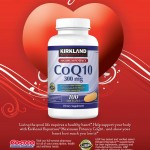
The post Kirkland Signature? CoQ10 300 mg., 100 Softgels appeared first on Spring 2016 Issue | CDiabetes Online Magazine.
]]>
The post Kirkland Signature? CoQ10 300 mg., 100 Softgels appeared first on Spring 2016 Issue | CDiabetes Online Magazine.
]]>
When it comes to controlling your blood glucose, you have probably researched the impact of everything from food, to exercise, to weight control. But have you looked into how spices may impact it? Cinnamon is a spice that doesn’t just add great flavor to foods; it may help to lower blood glucose as well. The best benefit it offers is that it’s all-natural and considered safe for most people with diabetes. Does it sound too good to be true? In Medieval times, cinnamon was used for medicinal purposes thanks to its high antioxidant properties. Research now shows us that it may be a powerful player in the fight against diabetes. Cinnamon may help to lower blood glucose levels by decreasing insulin resistance. When your cells become resistant to insulin, the glucose-lowering hormone in your body, they do not allow insulin to carry glucose into your cells. This results in glucose remaining in your bloodstream and rising over time, eventually leading to diabetes. Both whole cinnamon and extracted cinnamon have been shown to lower blood glucose levels. Cinnamon has also been shown to help reduce unhealthy LDL cholesterol levels and blood pressure, both of which are conditions that can increase your risk of heart disease. One down side is that everything that Mother Nature puts into the cinnamon plant also ends up in the finished product. This includes water soluble as well as fat soluble compounds. Our bodies have no problem processing water soluble compounds, but fat soluble compounds tend to be stubborn for our bodies to digest. When choosing a form of cinnamon, we suggest you look for a water extracted concentrate without the fat soluble compounds. Water extracted forms can maximize the health benefits, while minimizing the risks of fat soluble buildup. The extraction process allows the beneficial water soluble components of cinnamon to stay, providing you with the same health benefits of whole cinnamon in a much smaller portion. When looking for water extracted cinnamon, it’s important that you read the label and look specifically for the term “water extracted.” Because it is more concentrated, you can take fewer capsules to get all the health benefits of cinnamon. This may be more practical than trying to incorporate large amounts of whole cinnamon into your meal plan. CinSulin water-extracted cinnamon is backed by five human clinical studies, all of which are double blind, peer reviewed and published. In addition, UC Davis completed a meta analysis to validate the results of these human clinical studies. They found support that water extracted cinnamon lowered fasting blood glucose an average of 10%. If you are considering using cinnamon to help control blood glucose levels, make sure you discuss this with your certified diabetes educator or other healthcare provider. If you use cinnamon in combination with other medicines or supplements that also lower glucose levels, you may increase your risk of hypoglycemia. Your healthcare provider can work with you to make sure you incorporate cinnamon into your diabetes treatment plan in a way that works best for you. By Erin Palinski-Wade RD, LDN, CDE
The post How Water Extracted Cinnamon Can Improve Your Blood Glucose Control appeared first on Spring 2016 Issue | CDiabetes Online Magazine.
]]>
When it comes to controlling your blood glucose, you have probably researched the impact of everything from food, to exercise, to weight control. But have you looked into how spices may impact it? Cinnamon is a spice that doesn’t just add great flavor to foods; it may help to lower blood glucose as well. The best benefit it offers is that it’s all-natural and considered safe for most people with diabetes.
Does it sound too good to be true? In Medieval times, cinnamon was used for medicinal purposes thanks to its high antioxidant properties. Research now shows us that it may be a powerful player in the fight against diabetes.
Cinnamon may help to lower blood glucose levels by decreasing insulin resistance. When your cells become resistant to insulin, the glucose-lowering hormone in your body, they do not allow insulin to carry glucose into your cells. This results in glucose remaining in your bloodstream and rising over time, eventually leading to diabetes. Both whole cinnamon and extracted cinnamon have been shown to lower blood glucose levels. Cinnamon has also been shown to help reduce unhealthy LDL cholesterol levels and blood pressure, both of which are conditions that can increase your risk of heart disease.
One down side is that everything that Mother Nature puts into the cinnamon plant also ends up in the finished product. This includes water soluble as well as fat soluble compounds. Our bodies have no problem processing water soluble compounds, but fat soluble compounds tend to be stubborn for our bodies to digest.
When choosing a form of cinnamon, we suggest you look for a water extracted concentrate without the fat soluble compounds. Water extracted forms can maximize the health benefits, while minimizing the risks of fat soluble buildup. The extraction process allows the beneficial water soluble components of cinnamon to stay, providing you with the same health benefits of whole cinnamon in a much smaller portion.
When looking for water extracted cinnamon, it’s important that you read the label and look specifically for the term “water extracted.” Because it is more concentrated, you can take fewer capsules to get all the health benefits of cinnamon. This may be more practical than trying to incorporate large amounts of whole cinnamon into your meal plan.
CinSulin water-extracted cinnamon is backed by five human clinical studies, all of which are double blind, peer reviewed and published. In addition, UC Davis completed a meta analysis to validate the results of these human clinical studies. They found support that water extracted cinnamon lowered fasting blood glucose an average of 10%.
If you are considering using cinnamon to help control blood glucose levels, make sure you discuss this with your certified diabetes educator or other healthcare provider. If you use cinnamon in combination with other medicines or supplements that also lower glucose levels, you may increase your risk of hypoglycemia. Your healthcare provider can work with you to make sure you incorporate cinnamon into your diabetes treatment plan in a way that works best for you.
By Erin Palinski-Wade RD, LDN, CDE
The post How Water Extracted Cinnamon Can Improve Your Blood Glucose Control appeared first on Spring 2016 Issue | CDiabetes Online Magazine.
]]>
The post trunature? Advanced Strength CinSulin?, 170 Capsules appeared first on Spring 2016 Issue | CDiabetes Online Magazine.
]]>
The post trunature? Advanced Strength CinSulin?, 170 Capsules appeared first on Spring 2016 Issue | CDiabetes Online Magazine.
]]>
Keeping your blood glucose levels under control can be hard to do when you’re busy, especially if you count carbs as part of your balanced meal plan. You may not always have time to count carbs when you have to grab something fast at work, or while running errands. At these times, meal replacements may be just the help you need to keep your blood glucose levels on track. What is a meal replacement? The most common types of meal replacement are protein bars and shakes. Over the years, these products have become much better tasting. You can get them in a variety of flavors and forms. Products that are 150 calories or less are considered a snack replacement, while those that have 200 calories or more are considered full meal replacements. Snack replacements can be paired with a veggie or fruit serving to create a small meal. Most meal replacements are low in carbohydrates, and have a healthy amount of fiber and protein. How can meal replacements improve my health? One of the biggest challenges to leading a healthy lifestyle is not having enough time to make healthy meals and snacks. Meal replacements, which usually require little to no prep time, can provide you with plenty of protein, fat, carbohydrates, and calories to keep you full for a few hours. Having a healthy balance of fiber-rich carbohydrate and protein every three to four hours can help prevent blood glucose highs and lows, and stop you from craving unhealthy foods. Over time, this can help you reach and maintain a healthy weight. If you are having a hard time keeping up a healthy lifestyle, meal replacements may help you get back on track. Here are some ways you can add meal replacements to your day: Keep a meal replacement on hand to prevent overeating. Having a filling meal replacement when you are invited on a last minute outing with friends, or when you are craving sweets, can help you avoid giving in to temptation. Keep a protein bar in your bag. Whether you’re running late, stuck in traffic, or have errands to run and not enough time, a protein bar is a great way to keep your blood glucose balanced. Glucerna makes chocolate chip and peanut chocolate chip meal replacement bars, as well as 80-calorie snack bars in oatmeal raisin, chocolate caramel, and chocolate peanut flavors. The best part? They only have about 11 carbohydrates per serving. Try a protein-based shake or fruit drink for a quick and refreshing breakfast. Meal replacement shakes and drinks are great breakfast substitutes for those who usually skip breakfast. Glucerna meal replacement shakes are made just for people with diabetes, and come in delicious flavors like vanilla, chocolate, strawberry, and butter pecan. Glucerna shakes are 8 ounces each, and have 190 calories, 23 grams of carbs, 3 grams of fiber, and 10 grams of protein. Glucerna also makes Hunger Smart brand shakes in vanilla and chocolate, which are higher in protein and only 140 calories. By Staci Gulbin, MS, MEd, RD, LDN
The post Meal Replacements Can Help You Manage Diabetes on the Go appeared first on Spring 2016 Issue | CDiabetes Online Magazine.
]]>
Keeping your blood glucose levels under control can be hard to do when you’re busy, especially if you count carbs as part of your balanced meal plan. You may not always have time to count carbs when you have to grab something fast at work, or while running errands. At these times, meal replacements may be just the help you need to keep your blood glucose levels on track.
What is a meal replacement?
The most common types of meal replacement are protein bars and shakes. Over the years, these products have become much better tasting. You can get them in a variety of flavors and forms. Products that are 150 calories or less are considered a snack replacement, while those that have 200 calories or more are considered full meal replacements. Snack replacements can be paired with a veggie or fruit serving to create a small meal. Most meal replacements are low in carbohydrates, and have a healthy amount of fiber and protein.
How can meal replacements improve my health?
One of the biggest challenges to leading a healthy lifestyle is not having enough time to make healthy meals and snacks. Meal replacements, which usually require little to no prep time, can provide you with plenty of protein, fat, carbohydrates, and calories to keep you full for a few hours. Having a healthy balance of fiber-rich carbohydrate and protein every three to four hours can help prevent blood glucose highs and lows, and stop you from craving unhealthy foods. Over time, this can help you reach and maintain a healthy weight.
If you are having a hard time keeping up a healthy lifestyle, meal replacements may help you get back on track. Here are some ways you can add meal replacements to your day:
- Keep a meal replacement on hand to prevent overeating. Having a filling meal replacement when you are invited on a last minute outing with friends, or when you are craving sweets, can help you avoid giving in to temptation.
- Keep a protein bar in your bag. Whether you’re running late, stuck in traffic, or have errands to run and not enough time, a protein bar is a great way to keep your blood glucose balanced. Glucerna makes chocolate chip and peanut chocolate chip meal replacement bars, as well as 80-calorie snack bars in oatmeal raisin, chocolate caramel, and chocolate peanut flavors. The best part? They only have about 11 carbohydrates per serving.
- Try a protein-based shake or fruit drink for a quick and refreshing breakfast. Meal replacement shakes and drinks are great breakfast substitutes for those who usually skip breakfast. Glucerna meal replacement shakes are made just for people with diabetes, and come in delicious flavors like vanilla, chocolate, strawberry, and butter pecan. Glucerna shakes are 8 ounces each, and have 190 calories, 23 grams of carbs, 3 grams of fiber, and 10 grams of protein. Glucerna also makes Hunger Smart brand shakes in vanilla and chocolate, which are higher in protein and only 140 calories.
By Staci Gulbin, MS, MEd, RD, LDN
The post Meal Replacements Can Help You Manage Diabetes on the Go appeared first on Spring 2016 Issue | CDiabetes Online Magazine.
]]>
The post GLUCERNA? Vanilla Shake appeared first on Spring 2016 Issue | CDiabetes Online Magazine.
]]>
The post GLUCERNA? Vanilla Shake appeared first on Spring 2016 Issue | CDiabetes Online Magazine.
]]>
Exclusively from Costco Wholesale WAREHOUSE/COSTCO.COM | AVAILABLE NOW Item #906492 (Quit 4 Lozenges), #650382 (Quit 4 Gum), #906476 (Quit 2 Lozenges), #650377 (Quit 2 Gum
The post A Real-Life Costco Pharmacist On: Real Relationships appeared first on Spring 2016 Issue | CDiabetes Online Magazine.
]]>
Exclusively from Costco Wholesale
WAREHOUSE/COSTCO.COM | AVAILABLE NOW
Item #906492 (Quit 4 Lozenges), #650382 (Quit 4 Gum), #906476 (Quit 2 Lozenges), #650377 (Quit 2 Gum
The post A Real-Life Costco Pharmacist On: Real Relationships appeared first on Spring 2016 Issue | CDiabetes Online Magazine.
]]>
You and your family can work together to create a road map to lower your risks for diabetes, health disease and other health problems. First, the not-so-good news: Type 2 diabetes runs in families. This means that if you have diabetes, your children, grandchildren, brothers and sisters are all at risk. Now, here is the good news: As the National Diabetes Education Program points out, you can’t change your genes, but you can change your future— and you can help your family members change their futures as well. Preventing Diabetes A large study was done several years ago called The Diabetes Prevention Program (DPP). The study looked at over 3,000 people with higher than normal blood glucose levels. While their levels were not high enough to cause them to be diagnosed with diabetes, they did show that those people had a condition called prediabetes. Almost half of the people in the study were members of racial groups with high rates of type 2 diabetes: African-Americans, Hispanic-Americans, Asian-Americans, Pacific Islanders and American Indians. The study also included other groups of people at higher risk for type 2 diabetes, such as people aged 60 and over, women with a history of ?diabetes during pregnancy, and people with a parent, sibling or other relative with type 2 diabetes. The goal of the study was to see what people can do to help prevent the onset of diabetes. Of the people who took part in the study, one group reduced its risk for getting Type 2 diabetes by 58%. On average, this group exercised a total of 30 minutes per day, usually by walking or another moderate activity. They also lost 5% to 7% of their body weight, an average of 15 pounds. 1 UNDERSTAND THE RISKS Your family members need to know that you have diabetes so they can understand their own risk for diabetes. Although it is tempting not to tell them so that you can keep them from worrying, they need to know so that they can take their risk seriously. Some people use the chance to tell family members as a way to start talking about what they are doing to take care of their diabetes. Let them know that you are telling them about your condition because you care about them and want to help them be healthier. We know that people with diabetes are better able to manage their condition and their feelings about it when they have the love, support and understanding of their family and friends. 2 MAKE A PLAN Ask your family members to help you make a plan for managing your diabetes. Then talk about how you can help them to take steps to eat healthier and be more active. This way, you are both supporting each other in having healthy lifestyle plans. For example, you may talk about how to have healthier choices on the menu when you all get together for a meal. If you live close to one another, you may decide to walk or do other kinds of exercise together. Knowing that you are all working toward a common goal can bring your family closer. Supporting each other helps everyone to succeed. 3 INCLUDE YOUR CHILDREN Include children and grandchildren in your planning. The number of young people with type 2 diabetes is growing rapidly. Together, come up with a plan to keep them active and at a healthy weight. Turning off the TV, iPad, computer and cell phone and taking a walk or going to the park are good ways to connect and be active at the same time. 4 COMMUNITY INVOLVEMENT Think about ways you can involve your community, place of worship or school in diabetes prevention efforts. Support groups, walking clubs and community gardens are great ways to bring the neighborhood together. Encouraging healthier choices in the school cafeteria and other events where food is served will help everyone. Managing diabetes is not always easy but it is worth the effort. The same is true for lowering your risk for diabetes. Making a plan and providing and receiving support can help every person to be more successful. Getting more active and losing weight helped all age and ethnic groups, but it was especially helpful for the elder group. They reduced their risk for diabetes by 71% with these lifestyle changes. Another way to prevent diabetes is with medication. A different group that took part in the study was given metformin, a pill that is used to treat diabetes. People in the group that took metformin reduced their risk of getting Type 2 diabetes by about one-third. This medicine worked better in people who were younger and very overweight. ? ? ? Type 2 diabetes tends to run in families. Despite what you may have heard, diabetes does not “skip a generation.” You are more likely to get ?diabetes if your father or mother had it. By Martha Funnell, MS, RN, CDE
The post Keeping Healthy is a Family Affair appeared first on Spring 2016 Issue | CDiabetes Online Magazine.
]]>
The post Keeping Healthy is a Family Affair appeared first on Spring 2016 Issue | CDiabetes Online Magazine.
]]>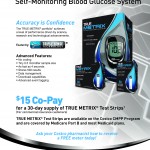
Available only at Costco Wholesale Outlets
The post Upgrade To True Metrix? Self-Monitoring Blood Glucose System appeared first on Spring 2016 Issue | CDiabetes Online Magazine.
]]>
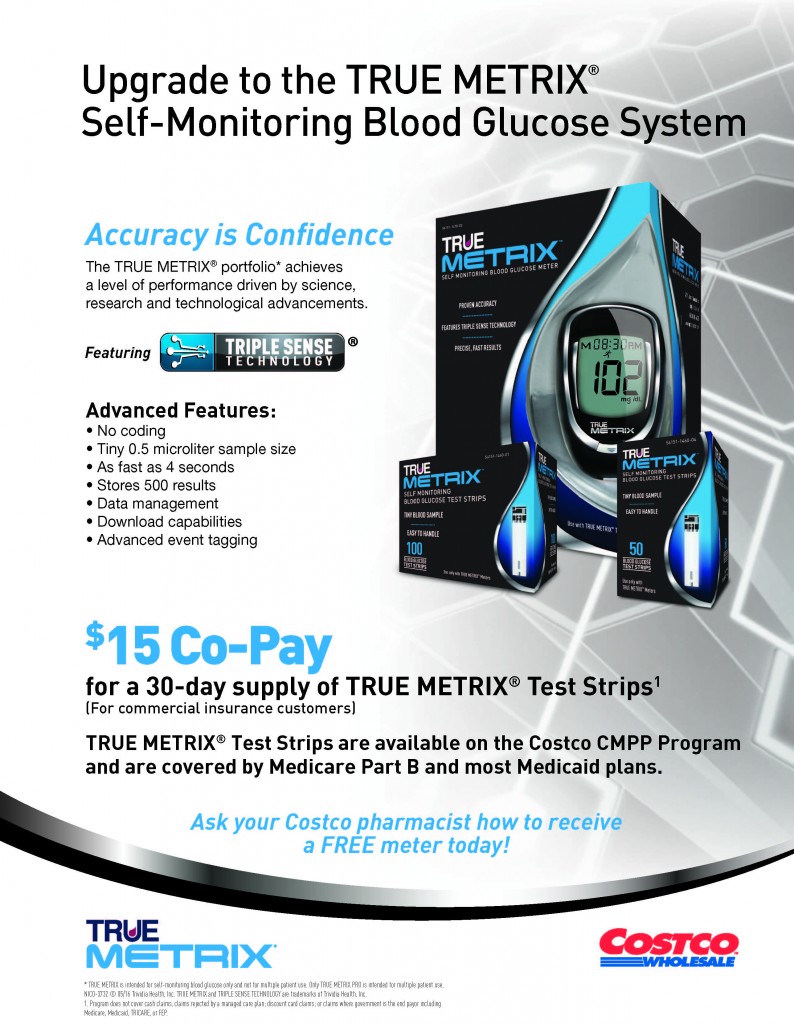
The post Upgrade To True Metrix? Self-Monitoring Blood Glucose System appeared first on Spring 2016 Issue | CDiabetes Online Magazine.
]]>
If you have diabetes, you probably know that you are at an increased risk for problems with your eyes, feet, skin?and nervous system. Did you know that diabetes can also cause problems in your mouth? Take Care Of Your Teeth Poor blood glucose control lets bacteria grow easily in your mouth. Having lots of bacteria in your mouth lead to?plaque buildup on your teeth. When this happens, your gums begin to pull away from your teeth, and pockets form between your teeth and gums. These pockets can become filled with germs and small bits of food. The gums then become inflamed and may bleed when you eat or brush your teeth. This condition is called “gingivitis”. Keeping your gums healthy is important because they help to hold your teeth in place. If nothing is done, you can get an infection in your gums that can go on to destroy the bone around your teeth, and they may start to move. Your teeth may fall out or need to be pulled. A recent study at the University of Copenhagen in Denmark looked at the link between oral health and diabetes. The study found that people with good oral health practices, along with a healthy diet and good stress management, had?lower blood glucose levels and healthier teeth and gums. Diabetes: A Major Cause Of Gum Disease There are many causes of gum disease, including smoking, hormonal changes, and certain cancers. Some medicines can?make your mouth dry, which can increase your risk for tooth and gum problems. This is because saliva helps slow the growth of bacteria and keeps your mouth healthy overall. Poorly controlled diabetes can also lead to gum disease. High levels of sugar in saliva make it easy for bacteria to grow there. This is why poorly controlled diabetes is a risk factor for gum disease. Also, diabetes can cause problems with blood flow to your teeth and gums. This makes it harder to repair damage to your gums and fight infection. It is also important to understand that if you develop gum disease from poor oral habits or other reasons, this could make it harder for you to control your diabetes. Other oral problems related to diabetes include: Thrush: this is an infection caused by a fungus that grows in the mouth and throat Dry mouth: this can cause soreness, ulcers, infections and cavities Dental Check-ups Are Important It’s important that you tell your dentist if you have diabetes, and keep them informed of any changes in your condition or medicines. Postpone any non-emergency dental procedures if your blood sugar is not well controlled. What Can You Do To Keep Your Mouth Healthy? The most important thing you can do is control your blood glucose levels. Have dental check-ups every six months?if possible. Avoid smoking and, if you wear dentures, remove and clean them every day. Good blood glucose control can also help prevent or relieve the dry mouth diabetes can cause. Here are some simple tips for a healthy mouth: Keep your blood glucose level under control Brush and floss every day Visit your dentist at least every 6 months. Be sure to tell them that you have diabetes Tell your dentist if your dentures do not fit right, or if your gums are sore Stop smoking. Your healthcare provider or dentist can tell you about what options there are to help you quit Call your dentist if you notice a problem. Take time to check your mouth regularly for any problems. If your gums bleed when you brush or floss, or if you notice dryness, soreness, white patches, or a bad taste in your mouth, contact your dentist right away. Remember, good blood glucose control can help keep your mouth happy and healthy for years to come. 6 Signs Of Gum Disease Red or swollen gums Gums that bleed easily when brushing or flossing Receding gums (pulling away from teeth) Loose teeth, making it hard to bite and chew Constant bad breath Dentures that don’t fit anymore By Robert Ehrman, MD
The post Oral Health And Diabetes appeared first on Spring 2016 Issue | CDiabetes Online Magazine.
]]>
If you have diabetes, you probably know that you are at an increased risk for problems with your eyes, feet, skin?and nervous system. Did you know that diabetes can also cause problems in your mouth?
Take Care Of Your Teeth
Poor blood glucose control lets bacteria grow easily in your mouth. Having lots of bacteria in your mouth lead to?plaque buildup on your teeth. When this happens, your gums begin to pull away from your teeth, and pockets form between your teeth and gums. These pockets can become filled with germs and small bits of food. The gums then become inflamed and may bleed when you eat or brush your teeth. This condition is called “gingivitis”.
Keeping your gums healthy is important because they help to hold your teeth in place. If nothing is done, you can get an infection in your gums that can go on to destroy the bone around your teeth, and they may start to move. Your teeth may fall out or need to be pulled.
A recent study at the University of Copenhagen in Denmark looked at the link between oral health and diabetes. The study found that people with good oral health practices, along with a healthy diet and good stress management, had?lower blood glucose levels and healthier teeth and gums.
Diabetes: A Major Cause Of Gum Disease
There are many causes of gum disease, including smoking, hormonal changes, and certain cancers. Some medicines can?make your mouth dry, which can increase your risk for tooth and gum problems. This is because saliva helps slow the growth of bacteria and keeps your mouth healthy overall. Poorly controlled diabetes can also lead to gum disease.
High levels of sugar in saliva make it easy for bacteria to grow there. This is why poorly controlled diabetes is a risk factor for gum disease. Also, diabetes can cause problems with blood flow to your teeth and gums. This makes it harder to repair damage to your gums and fight infection. It is also important to understand that if you develop gum disease from poor oral habits or other reasons, this could make it harder for you to control your diabetes.
Other oral problems related to diabetes include:
- Thrush: this is an infection caused by a fungus that grows in the mouth and throat
- Dry mouth: this can cause soreness, ulcers, infections and cavities
Dental Check-ups Are Important
It’s important that you tell your dentist if you have diabetes, and keep them informed of any changes in your condition or medicines. Postpone any non-emergency dental procedures if your blood sugar is not well controlled.
What Can You Do To Keep Your Mouth Healthy?
The most important thing you can do is control your blood glucose levels. Have dental check-ups every six months?if possible. Avoid smoking and, if you wear dentures, remove and clean them every day. Good blood glucose control can also help prevent or relieve the dry mouth diabetes can cause.
Here are some simple tips for a healthy mouth:
- Keep your blood glucose level under control
- Brush and floss every day
- Visit your dentist at least every 6 months. Be sure to tell them that you have diabetes
- Tell your dentist if your dentures do not fit right, or if your gums are sore
- Stop smoking. Your healthcare provider or dentist can tell you about what options there are to help you quit
- Call your dentist if you notice a problem.
Take time to check your mouth regularly for any problems. If your gums bleed when you brush or floss, or if you notice dryness, soreness, white patches, or a bad taste in your mouth, contact your dentist right away. Remember, good blood glucose control can help keep your mouth happy and healthy for years to come.
6 Signs Of Gum Disease
- Red or swollen gums
- Gums that bleed easily when brushing or flossing
- Receding gums (pulling away from teeth)
- Loose teeth, making it hard to bite and chew
- Constant bad breath
- Dentures that don’t fit anymore
By Robert Ehrman, MD
The post Oral Health And Diabetes appeared first on Spring 2016 Issue | CDiabetes Online Magazine.
]]>
The post Colgate Total? Toothpaste appeared first on Spring 2016 Issue | CDiabetes Online Magazine.
]]>
The post Colgate Total? Toothpaste appeared first on Spring 2016 Issue | CDiabetes Online Magazine.
]]>
Some say soy increases your risk of cancer, while others say soy can lower your risk for chronic disease. Can one?serving?of soy a day keep?the doctor away??Over the past 10?years, people have?been talking a lot?about soy and how it?affects your health. Is Soy Good?For You? Some say soy increases your risk?of cancer, while?others say soy can?lower your risk for chronic diseases,?such as diabetes. So who should?you believe? Check?out the research and?decide for yourself. About Soy It is one of the few?plant foods that has?enough of the protein building blocks we all need for good health. It has very little saturated fat and no cholesterol. It can be a healthy change from animal proteins such as beef, pork or eggs. These animal proteins can be high in fat. It has lots of good fats, like polyunsaturated fats and omega-3 fatty acids. There has been a lot of argument about soy because it contains plant hormones called “phytoestrogens,” or plant estrogens. It is not clear whether or not phytoestrogens can lead to hormone-related cancers. Soy And Cancer Research Scientists used?to think that the?phytoestrogens from?soy could lead to?an increased risk of?tumor growth. But?these tumor findings?were only done using?animals like rats?and mice. Advanced?studies show that?rats and mice digest?phytoestrogens differently from?people. Other studies?have shown that soy?phytoestrogens can?actually help?prevent cancer. Researchers also?looked at people with?lung cancer. They?found that people?who eat more soy?foods lived longer?than those who ate?very little soy. Based on these findings and others,?the American Cancer?Society says that?soy is safe, even?for people who?have had estrogen-related?cancers like?breast cancer. how much soy should i eat each day? One serving of soy gives you about 7 to 15 g?of protein. The research says that adults?should eat between two and four servings,?or about 25 g, of soy foods each day. Soy And Heart Health Soy can lower your?risk of heart disease?and help lower your cholesterol. If you?replace some high-fat?animal proteins with?low-fat soy proteins,?you may be able to?lower your blood?lipids and, therefore,?lower your risk of?heart disease. The American Heart?Association suggests?that eating between?25 and 50 grams of?soy protein each day?is safe and can help?reduce your LDL, or?“bad” cholesterol,?by up to 8 percent. The Verdict… Whole soy foods?are safe to eat for?everyone as part of a?healthy lifestyle. They?help lower your risk?of heart disease and?cancer. So go ahead?and replace the meat?in your stir fry with?some soy beans for a?healthy twist. It’s sure?to please your taste?buds and your heart. 5tips to add soy to your diet 1 Stick to whole soy foods, such as soybeans, soy nuts, tofu or tempeh. Fermented soy foods such as miso can be high in sodium. More processed soy foods, like nuggets or soy patties, may have a lot of added sodium and sugar. 2 Drink one cup of soy milk with meals, in a smoothie, or on cereal for about 7 g of protein and less than 5 g of fat. 3 Eat a half-cup of soybeans, also known as edamame, alone or as part of salads, soups or stir-fry dishes. 4 One-quarter cup of soy nuts provides you with 15 g of protein and only 10 g of fat. This is about half the fat of one serving of peanuts or cashews. 5 Use tofu to replace meat in recipes. Stir-fry and grill tofu, or dice and add it to stews, soups or lasagna. By Staci Gulbin, MS, MEd, RD, LD
The post To Soy Or Not To Soy? appeared first on Spring 2016 Issue | CDiabetes Online Magazine.
]]>
The post To Soy Or Not To Soy? appeared first on Spring 2016 Issue | CDiabetes Online Magazine.
]]>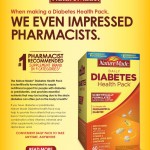
The post Nature Made? Diabetes Health Pack, 60 Packets appeared first on Spring 2016 Issue | CDiabetes Online Magazine.
]]>
The post Nature Made? Diabetes Health Pack, 60 Packets appeared first on Spring 2016 Issue | CDiabetes Online Magazine.
]]>
Most of us don’t think about our feet very often, but they are certainly one of the most abused parts of the body. and if there is a problem, painful feet can really make your life miserable. how many times have you heard someone say “when your feet hurt, you hurt all over”? while everyone needs to give their feet attention, this is especially true for those with diabetes or blood flow problems. Nerve damage, or neuropathy, is common among people with diabetes and can cause loss of feeling in the feet. if one doesn’t feel pain, a simple injury such as a blister can become a serious infection before you find out that you have a problem. People with diabetes can also have blood flow problems, or peripheral arterial disease (Pad), which can cause injuries to heal more slowly. The good news is that there are things you can do to care for your feet. it all comes down to protecting them and being aware of any problems that occur before they become more serious. Keep your feet dry. It’s dark and moist inside your shoe, which makes it easy for bacteria to cause an infection. 7 Easy Foot Care Tips 1. Check your feet every day. Look for cuts, sores, blisters, foreign bodies (like splinters), redness or swelling around your feet and ankles and between your toes. If there is anything that is painful or looks different, call your healthcare provider immediately. 2. Keep your feet clean and moisturized. While showering, be careful not to excessively soak your feet; this can strip away the protective oils and cause them to become dry and cracked. Dry between the toes to help prevent infections, such as athlete’s foot. Use lotion to keep your feet soft and prevent against cracks or fissures. Never use lotion between the toes as it increases your risk for infection. 3. Treat cuts and sores right away. If you have a small sore or blister, use a wound wash or an antiseptic and cover with a bandage. If your sore gets worse or does not begin to heal after one-to-two days, call your foot care specialist or your primary care provider. It’s always better to be seen for a false alarm than to end up in the hospital. 4. Keep your toenails trimmed. Cut your nails straight across. If your nails are too thick or are hard to cut, a podiatrist (foot care specialist) can cut your nails and care for any thick or discolored nail tissue. If your toenails become red and infected, call your podiatrist or healthcare provider. 5. “Bathroom surgery” is never a good idea. Do not trim, shave or use over-the-counter medications to dissolve corns and calluses. The risk of doing more harm than good is just not worth it. Your podiatrist or healthcare provider can help you safely care for corns and calluses. 6. Buy shoes that fit. Shop for shoes later in the day because swelling can affect shoe fit. Ill-fitting shoes or boots can cause blisters and sores that can easily become infected. Have your feet measured from time to time to be sure your size has stayed the same. 7. Protect your feet from both hot and cold. If your feet become numb from nerve damage, you can burn your skin without knowing it. Check your bath water with your elbow rather than your toes. Be careful of hot pavements, sidewalks or sand at the beach which can also burn your feet. Avoid putting your feet on radiators, space heaters or heating pads. To protect from the cold, wear wool socks, and if your feet get wet, change your shoes and socks as soon as you can. By Guy Pupp, DPm, FACFAS ?chairman of the board?save a leg, save a life foundation
The post Some Good News For Your Feet appeared first on Spring 2016 Issue | CDiabetes Online Magazine.
]]>
The post Some Good News For Your Feet appeared first on Spring 2016 Issue | CDiabetes Online Magazine.
]]>
Facts About Vitamins, Minerals?And Herbal Supplements For People With Diabetes. IT’S NOT UNUSUAL to hear people who have diabetes say, “I don’t want to take medicine.” Yet a lot of people with diabetes are taking dietary supplements, such as vitamins, minerals and herbs for extra help with their health problems. Certified Diabetes Educator (CDE) and Professor of Pharmacy Laura Shane-McWhorter knows just how common this is. In an article she wrote for the American Diabetes Association, she noted that in 2011, more than half of Americans with diabetes took some kind of supplement every day. This is a big increase from 2002, when only 1-in-4 people with diabetes were taking an herbal product each day. Complementary And Alternative Medicine Taking vitamins, minerals and herbs is part of an approach to health called Complementary and Alternative Medicine, or CAM by the National Center for Complementary and Alternative Medicine (NCCAM). They define CAM as “a group of varied medical systems, practices, and products that are not usually part of ‘regular’ medicine.” Regular medicine is the kind of medicine that most doctors, nurses, diabetes educators and pharmacists currently practice. Regular medicine is also known as Western medicine. The differences between CAM and regular medicine are not always clear. There is lots of new research showing that some CAM practices are safe and effective. This has led to many of these practices being accepted by regular healthcare providers and the public. For example, it is now common for both CAM and regular healthcare providers to suggest yoga as a way to decrease stress. Integrative medicine is a practice that does just this: It blends alternative and complementary therapies and regular medicine so patients get the best of both worlds. 1 Understand why you are taking the supplement. Do you know what the supplement is supposed to do for you? If it is one that claims to lower your blood glucose, do you know if it is helping? To find out, check your blood glucose level often when you are taking the supplement. Then cut down on the amount you take to see if it makes any difference. If you see that it doesn’t make any difference, there may be no need to keep taking it. 2 Tell your healthcare providers, including your pharmacist, what supplements you are taking. Just like you tell your healthcare providers what medicines you take, you should also tell them what supplements and other over-the-counter medicines you take. Better yet, bring the bottles with you to your next office visit. Your healthcare provider may be able to tell you if it’s safe to take all of the different medicines together. 3 continue to take your prescribed medicine. Do not stop taking your prescribed medicine when you start a new supplement. If you see your blood glucose levels are getting too low, contact your healthcare provider and discuss this before making any changes on your own. 4 Keep learning from trusted sources. You may receive information about CAM in the mail or from friends and family. But, don’t trust everything you see and hear. Make sure the information you get is correct and safe. 5 There is also a lot of information available for free on the internet. Check out nccam.nih.gov for useful information. You can also learn a lot by reading magazine or talking to your local pharmacist. Herbs And Dietary Supplements People take dietary supplements for many different reasons including: the belief that they can avoid the side effects of regular medicines the belief that they are natural. It is important to know that although many supplements are natural, natural does not always mean safe. There are many plants that are natural, but are also poisonous. Some supplements may also interact with medicines you already take, prescribed or over-the-counter. There is no government agency to make sure the supplements you take are safe, as there is for regular medicines. Prescription and over-the-counter medicines need to go through years of scientific research to prove they are safe and effective before they can be sold to you. Once on the market, the government regulates all prescription drugs to make sure the actual ingredients and amount stated on the label is what you receive. Dietary supplements have no such regulation. There is no law that says the amount of the supplement needs to be stated on the bottle, and if it does list this, there is no guarantee that what it states is true. By Joy Pape MSN, RN, FNP, CDE, WOCN, CFCN, FAADE
The post Complementary Medicine, Vitamins And Supplements appeared first on Spring 2016 Issue | CDiabetes Online Magazine.
]]>
The post Complementary Medicine, Vitamins And Supplements appeared first on Spring 2016 Issue | CDiabetes Online Magazine.
]]>
There is?no difference?between a pen?and a syringe?in?terms of?blood glucose?response.?It’s a?personal choice. While it’s common to?dread the thought of?taking insulin, it’s also?common to wonder why?you resisted once you get?started. If you feel ?down 33% the estimated percentage of people with?type 2 diabetes who take insulin, either alone?or in combination with diabetes pills. about taking insulin, it may?help to remind yourself?that taking insulin is not a?sign that you failed to take?care of yourself or that your?diabetes has gotten worse. It just means that your body needs insulin to keep your blood glucose levels in your target range. Pens vs. syringes Insulin can be given using either an insulin pen or a syringe. There are pluses and minuses for each. For many people, the biggest factor to consider is insurance coverage. Some insurers will not cover pens because of the cost. However, morecompanies cover pens now, so check with your insurance plan to find out if yours covers them. If you often take insulin while you’re away from home, it may be easier to carry a pen rather than a vial of insulin and a syringe. On the other hand, if you take large doses of insulin it may be easier to use a syringe. Some people feel more secure when they use a syringe because they can see the insulin leaving the syringe. Needles and syringes The good news is that needles are now smaller and thinner than ever for both pens and syringes. This means injections are less painful. Needles that are between 4-6 mm (less than ?-inch long) may be used by any adult, regardless of body weight. Be sure to give an air shot each time you use a new pen needle to make sure you get your complete dose. There is no difference in syringes in terms of accuracy or comfort. Choose the syringe size that best matches your dose and is easiest for you to read. If you take doses that end in odd numbers, choose a syringe with 1-unit markings. Giving your injection You don’t need to clean the top of the vial or your skin with alcohol. Insulin is considered bacteriostatic, which means it’s very unlikely it will give you an infection. Choose an injection site on your thighs, arms, buttocks or abdomen. Insulin is absorbed fastest from your abdomen. Your blood glucose will be more stable if you stick with one area for each type of insulin. You do need to change your injection sites slightly each day to avoid getting lumps and bumps, which interfere with insulin absorption. You don’t need to pinch an inch of skin. You can simply stick the needle straight in. With today’s shorter needles, there is almost no chance you will inject your insulin into a vein or muscle. The exceptions are children and very thin adults, who need to insert the needle at a 45-degree angle. Hold the needle in place for a count of 10 before pulling the needle out to be sure you are getting your full insulin dose. Taking it with you Unopened vials or pens can be kept in the refrigerator until the expiration date. Opened vials or the pen you are currently using don’t need to be refrigerated as long as they are at room temperature, or between 32o and 86oF. If your insulin freezes, throw it out because it will not work at all. Insulin that has been overheated will be less effective. The time this is most likely to happen is when insulin is left in a car on a cold or hot day, on a window sill or in a steamy bathroom. You can buy an insulated container to keep your insulin at the right temperature away from home. It is a good idea to think about when this is likely to happen so you can try to prevent it. It is very important to have effective insulin around when you need it. It may sound like a chore, but in the long run, it will make your life easier. ? ? 4 insulin facts ? Most people find that insulin shots are not as painful as they feared. ? If you find it painful or you often get bruises, ask your healthcare provider or educator to watch you inject yourself so he or she can offer advice. ? Some people find that pressing firmly on the injection site for a few seconds helps to ease the pain. ? Don’t worry if you see a drop of blood when you remove the needle. This does not mean that you have injected your insulin into a muscle or vein. Study Findings and what the Experts Say People who use pens are more likely to give the correct?dose and are more satisfied with taking insulin. Needles are designed to be used once, and they?get dull with each use. If you decide to reuse the?needle on your pen, change it at least once a day. Make a plan for how to take your pre-meal?insulin when away from home. By Martha Funnell, MS, RN, CDE
The post Tips For Giving Your Insulin Shot appeared first on Spring 2016 Issue | CDiabetes Online Magazine.
]]>
The post Tips For Giving Your Insulin Shot appeared first on Spring 2016 Issue | CDiabetes Online Magazine.
]]>
Have you ever tried to lose weight and hit a point where the pounds didn’t seem to come off anymore? Does it seem harder to lose weight now than it was when you were younger? If you’ve answered yes to these questions, it may be time to jumpstart your weight loss. Here are a few things you can do to help burn those calories again—and hopefully get to or maintain your weight goal. METABOLISM 101 Metabolism is a fancy word for the rate or speed at which your body uses energy. The body needs energy to do everything: to breathe, to digest food, to think and, of course, to do physical activity. Just like your car runs on gas, your body derives the energy it needs from the foods you eat. When you’re young, your metabolism (sometimes called metabolic rate) is higher. That’s why you could eat almost anything, in any amount, and not gain weight—when you were young. But with age, the metabolism starts to slow down. Eating the same amount of food as you did in your 20s now makes you gain weight. Starting at about the age of 25, metabolism tends to drop between 5 percent and 10 percent every decade. However, your genes play a role, too. The same calorie intake may translate into different weight gains for different people. Your genes, in part, determine how fast you burn calories. Furthermore, men tend to have a faster metabolism than women—up to 15 percent faster. This is partially due to the fact that men naturally have more muscle mass than women, and the more muscle one has, the more calories one burns. Women, on the other hand, tend to have more fat, and their bodies hold onto it more than mens do. This might explain why women often have a harder time losing weight. As you lose weight, your metabolism slows a bit because there’s less of you to energize. Your body doesn’t need as much energy as it did when you weighed more. Also, even when you lose weight the healthy way—by cutting back on food portions and being more active—you will lose some muscle along with fat. Less muscle mass means fewer calories burned. ? 12 Ways To Boost Your Metabolism The good news is that there’s a lot that you can do to speed up your metabolism. Here’s how: 1 Build up your muscle mass. You don’t need to become a bodybuilder, but the more muscle you have compared with fat, the more calories you’ll burn. Think of it this way: Each pound of muscle burns 6 calories each day, while each pound of fat burns only 2 calories a day. Be sure to include strength training at least three times a week as part of your physical activity. 2 Fit in fiber. High-fi ber foods help keep your digestive tract healthy. One type of fi ber, called soluble fi ber, may help lower blood glucose and cholesterol levels. Fiber may also help boost metabolism because the body tries to digest it, which burns calories in the process. High-fiber foods include whole grain breads and cereals, fruits and vegetables, and beans. 3 Drink water. One study showed that people who drank eight or more glasses of water every day burned more calories than people who drank only four glasses of water each day. 4 Eat breakfast. Your body stays in sleep mode all night, so give it a jump-start in the morning with a good breakfast. Choose a bowl of high-fiber cereal, some fruit and a healthy protein food, such as an egg, low-fat cottage cheese or some peanut butter. People who eat breakfast are more likely to lose weight than people who don’t. 5 Give your heart a workout. Strength training builds muscle mass, but you also need aerobic activity to help burn calories. When you do aerobic activity, such as walking, jogging, swimming or using an exercise bike, you’ll keep burning calories even after you stop moving. You can get an even more beneficial workout by doing interval training, which means working hard for a couple of minutes, then slowing down to an easier pace. 6 Eat regularly. If you think skipping meals helps cut calories, think again. It takes energy to burn energy. When you eat every few hours, you boost your metabolism. If you skip a meal or go too long without eating, your body goes into starvation mode and conserves calories. 7 Keep moving. Make time for physical activity to help control your diabetes. A lso, try to move as often as you can during the day. Stand up and walk around when you’re on the phone, march in place when you watch television, or climb a few flights of stairs to help you burn calories and strengthen your muscles. 8 Eat enough. As tempting as those lowcalorie diets can be, it’s best to avoid them. If you take in fewer than 1,000 calories per day, your metabolism will slow down because the body thinks it’s starving. Although it sounds funny, you need to eat to lose weight. 9 Include protein. Make sure each of your meals contains protein. It takes more energy for your body to digest protein than carbohydrates. Also, protein helps maintain your muscle mass. Choose healthy proteins, such as skinless chicken or turkey, lean beef, eggs, fish, lowerfat cheese and tofu. 10 Spice it up.Hot, spicy foods can also raise your metabolism for a short while. 11 Eat more fish.Cold water, fatty fish—like salmon, tuna, mackerel and herring—contain healthy fish oils that may not only protect against heart disease, but may also help increase metabolism by about 400 calories per day. 12 Get plenty of sleep.A lack of sleep can lead to diabetes, high blood pressure, heart disease and weight gain. When you’re short on sleep, certain hormones, like cortisol and ghrelin, kick in and increase your appetite. Try to get between seven and eight hours of sleep every night. By Amy Campbell,?MS, RD,...
The post Jump-Start Your Weight Loss appeared first on Spring 2016 Issue | CDiabetes Online Magazine.
]]>
The post Jump-Start Your Weight Loss appeared first on Spring 2016 Issue | CDiabetes Online Magazine.
]]>
Many people with diabetes have heart disease. What foods, vitamins and supplements can help? Start with fish and fish oils. Oily fish—such as salmon, mackerel, lake trout, herring, sardines and albacore tuna— contain two helpful omega-3 fatty acids: EPA and DHA. Fish oil capsules usually have stronger doses of EPA and DHA. Canned tuna and salmon have the highest levels of omega 3 fats. The American Heart Association (AHA) suggests people with heart disease get 1,000 mg of fi sh oil per day and people with a high triglyceride level get 2,000–4,000 mg. Research shows omega-3 fats can: lower the incidence of an irregular heartbeat, which can lead to sudden death from a heart attack or stroke. lower triglycerides in people whose levels are high. reduce buildup of plaque on artery walls, which slows down the narrowing of the heart’s arteries. prevent blood clots from forming and keep the clots from sticking to artery walls. That helps prevent heart attack and stroke. improve health of arteries. lower blood pressure slightly. enhance the power of medicines called statins, which help improve cholesterol levels. Flaxseed and fl axseed oil also?have omega-3 fatty acids, which?may help reduce triglyceride?levels and improve good?cholesterol (HDL) levels.?Flaxseed oil is available in?liquid and capsule form Many people with diabetes are interested in finding vitamins and minerals that will keep their blood glucose level within target range. Here are a few products that show promise in studies, although more research is needed before all of their effects are known: ALPHA LIPOIC ACID (ALA) ALA is an acid found in the body that helps convert glucose to energy. It is also an antioxidant that may help prevent the damage free radicals may do to the body. A free radical is a molecule that can cause cells to malfunction, which can lead to complications from diabetes, such as kidney damage, eye disease and nerve damage. ALA helps reduce the burning, pain, numbness and tingling of diabetes-related neuropathy (nerve damage). It may also improve insulin sensitivity and blood glucose control in people with type 2 diabetes. It may take a few?weeks to see results. CHROMIUM Chromium is a mineral the body needs to keep blood glucose levels in a healthy range. It may help lower blood glucose levels and improve blood fats in people with type 2 diabetes whose levels are too high. Chromium?picolinate is a form that seems to be absorbed best. Studies show combining chromium picolinate with?biotin is effective. Biotin is a b vitamin that helps break down carbohydrate, fat and protein. CINNAMON Based on early studies, cinnamon was thought to improve type 2 diabetes and high cholesterol levels. However, newer studies show more research must be done to confirm its effectiveness. Many people enjoy adding cinnamon to their food to see if it will make a difference for them. The recommended amount to try is about 1?3 teaspoon. FENUGREEK Several studies show that Fenugreek helps lower blood glucose and bad (LDL) cholesterol levels and raises good (HDL) cholesterol levels in people with diabetes. GARLIC Garlic appears to have antioxidant effects. It also may lower blood glucose by increasing the release of insulin,?lower blood pressure, and improve blood fats. GINSENG (AMERICAN) Studies show that ginseng lowers blood glucose. It appears to do so by slowing the breakdown of carbohydrates in?the body. It may take a few weeks to see benefits. GYMNEMA SYLVESTRE Gymnema was first used in India more than 2,000 years ago to treat diabetes. It may help insulin and other oral diabetes medicines work better but must be studied further. Magnesium The body needs magnesium to break down carbohydrates and improve the way insulin works. Low levels of magnesium?have been linked to higher blood glucose levels and insulin resistance in adults. VITAMIN D Recent studies show vitamin D may help the body make insulin and use it better. A lack of vitamin D has been found in many people with type 2 diabetes, and in some people who already have pre-diabetes. For those who get enough sunlight, 400 IU of vitamin D is recommended. If you cannot go in the sun, you may benefit from 1,000 IU per day. Those who are concerned about osteoporosis should take calcium with vitamin D. ANTIOXIDANTS Vitamins C and E are antioxidants that may lower your heart disease risk by preventing bad (LDL) cholesterol from?producing plaque that narrows arteries. Vitamin E also may help keep your heart healthy. Try to eat a diet high in vitamin E, which is found in green leafy vegetables, nuts and vegetable oils. Vitamin E works better when combined with vitamin C, so try to take these vitamins together. The recom mended daily intake of vitamin C for men over the age of 18 is 90 mg per day, and for women over the age of 18, 75 mg per day. Smoking raises the body’s need for vitamin C. B VITAMINS The AHA suggests that people who are at high risk for, or already have heart disease, should get folate, B6 and B12?into their diets. One way to get these nutrients is to eat a lot of vegetables. Or, take a daily multivitamin and mineral supplement that provides 100 percent of the Recommended Daily Allowance (RDA) for folic acid, B6 and B12. Recent studies suggest vitamin B12 helps the brain think more clearly, and may help prevent age-related decline ?in brain function. NIACIN Niacin is a B vitamin that lowers total cholesterol, LDL (bad) cholesterol and triglyceride levels, while raising HDL (good) cholesterol levels. Niacin supplements should only be taken under the supervision of your physician because of potential side effects such as flushing or hot flashes. The average daily dose of niacin is 1.5–3 grams per day. COENZYME-Q10 Co-Q10 is a natural antioxidant made in the heart, pancreas and kidneys. It helps cells produce energy and keeps?the heart healthy. If a person has already had a heart attack, Co-Q10 can help prevent future heart problems. Some heart medicines, such as statins, interfere with the...
The post Vitamins, Minerals & Glucose Control appeared first on Spring 2016 Issue | CDiabetes Online Magazine.
]]>
Many people with diabetes have heart disease. What foods, vitamins and supplements can help?
Start with fish and fish oils. Oily fish—such as salmon, mackerel, lake trout, herring, sardines and albacore tuna— contain two helpful omega-3 fatty acids: EPA and DHA. Fish oil capsules usually have stronger doses of EPA and DHA.
Canned tuna and salmon have the highest levels of omega 3 fats. The American Heart Association (AHA) suggests people with heart disease get 1,000 mg of fi sh oil per day and people with a high triglyceride level get 2,000–4,000 mg.
Research shows omega-3 fats can:
- lower the incidence of an irregular heartbeat, which can lead to sudden death from a heart attack or stroke.
- lower triglycerides in people whose levels are high.
- reduce buildup of plaque on artery walls, which slows down the narrowing of the heart’s arteries.
- prevent blood clots from forming and keep the clots from sticking to artery walls. That helps prevent heart attack and stroke.
- improve health of arteries.
- lower blood pressure slightly.
- enhance the power of medicines called statins, which help improve cholesterol levels.
Flaxseed and fl axseed oil also?have omega-3 fatty acids, which?may help reduce triglyceride?levels and improve good?cholesterol (HDL) levels.?Flaxseed oil is available in?liquid and capsule form
Many people with diabetes are interested in finding vitamins and minerals that will keep their blood glucose level within target range. Here are a few products that show promise in studies, although more research is needed before all of their effects are known:
ALPHA LIPOIC ACID (ALA)
ALA is an acid found in the body that helps convert glucose to energy. It is also an antioxidant that may help prevent the damage free radicals may do to the body. A free radical is a molecule that can cause cells to malfunction, which can lead to complications from diabetes, such as kidney damage, eye disease and nerve damage.
ALA helps reduce the burning, pain, numbness and tingling of diabetes-related neuropathy (nerve damage). It may
also improve insulin sensitivity and blood glucose control in people with type 2 diabetes. It may take a few?weeks to see results.
CHROMIUM
Chromium is a mineral the body needs to keep blood glucose levels in a healthy range. It may help lower blood
glucose levels and improve blood fats in people with type 2 diabetes whose levels are too high. Chromium?picolinate is a form that seems to be absorbed best. Studies show combining chromium picolinate with?biotin is effective. Biotin is a b vitamin that helps break down carbohydrate, fat and protein.
CINNAMON
Based on early studies, cinnamon was thought to improve type 2 diabetes and high cholesterol levels. However,
newer studies show more research must be done to confirm its effectiveness. Many people enjoy adding cinnamon
to their food to see if it will make a difference for them. The recommended amount to try is about 1?3 teaspoon.
FENUGREEK
Several studies show that Fenugreek helps lower blood glucose and bad (LDL) cholesterol levels and raises good (HDL) cholesterol levels in people with diabetes.
GARLIC
Garlic appears to have antioxidant effects. It also may lower blood glucose by increasing the release of insulin,?lower blood pressure, and improve blood fats.
GINSENG (AMERICAN)
Studies show that ginseng lowers blood glucose. It appears to do so by slowing the breakdown of carbohydrates in?the body. It may take a few weeks to see benefits.
GYMNEMA SYLVESTRE
Gymnema was first used in India more than 2,000 years ago to treat diabetes. It may help insulin and other oral diabetes medicines work better but must be studied further.
Magnesium
The body needs magnesium to break down carbohydrates and improve the way insulin works. Low levels of magnesium?have been linked to higher blood glucose levels and insulin resistance in adults.
VITAMIN D
Recent studies show vitamin D may help the body make insulin and use it better. A lack of vitamin D has been found in many people with type 2 diabetes, and in some people who already have pre-diabetes. For those who get enough sunlight, 400 IU of vitamin D is recommended. If you cannot go in the sun, you may benefit from 1,000 IU per day. Those who are concerned about osteoporosis should take calcium with vitamin D.
ANTIOXIDANTS
Vitamins C and E are antioxidants that may lower your heart disease risk by preventing bad (LDL) cholesterol from?producing plaque that narrows arteries. Vitamin E also may help keep your heart healthy. Try to eat a diet high in vitamin E, which is found in green leafy vegetables, nuts and vegetable oils. Vitamin E works better when combined with vitamin C, so try to take these vitamins together. The recom mended daily intake of vitamin C for men over the age of 18 is 90 mg per day, and for women over the age of 18, 75 mg per day. Smoking raises the body’s need for vitamin C.
B VITAMINS
The AHA suggests that people who are at high risk for, or already have heart disease, should get folate, B6 and B12?into their diets. One way to get these nutrients is to eat a lot of vegetables. Or, take a daily multivitamin and mineral supplement that provides 100 percent of the Recommended Daily Allowance (RDA) for folic acid, B6 and B12. Recent studies suggest vitamin B12 helps the brain think more clearly, and may help prevent age-related decline ?in brain function.
NIACIN
Niacin is a B vitamin that lowers total cholesterol, LDL (bad) cholesterol and triglyceride levels, while raising HDL (good) cholesterol levels. Niacin supplements should only be taken under the supervision of your physician because of potential side effects such as flushing or hot flashes. The average daily dose of niacin is 1.5–3 grams per day.
COENZYME-Q10
Co-Q10 is a natural antioxidant made in the heart, pancreas and kidneys. It helps cells produce energy and keeps?the heart healthy. If a person has already had a heart attack, Co-Q10 can help prevent future heart problems. Some heart medicines, such as statins, interfere with the body’s production of Co-Q10. Heart disease also can lower?the body’s level of that helpful product. The best way to maintain a healthy level of Co-Q10 in your body is to take a supplement. ?The recommended dose for adults is 30–200 mg per day.
PLANT STANOLS AND STEROLS
Plant stanols and sterols are natural substances found in fruits and vegetables. They can help lower bad (LDL) cholesterol by up to 15% and lower the risk of heart disease. They can also work with cholesterol-lowering medications, such as statins, to lower the body’s LDL level. Smaller amounts of these products are also naturally found in corn oil, sunfl ower oil, olive oil, corn, beans, nuts, oranges and apples. Plant stanols and sterols also come in supplement form sometimes called betasitosterol or sitosterol.
Tell your healthcare provider about the dietary supplements you take, or ask about supplements you wish to try. They can warn you about the products that may interact with your other medicines and let you know if you need to ?stop taking any before surgery.
Reviewed by Janis Roszler, RD, CDE, LD/N
The post Vitamins, Minerals & Glucose Control appeared first on Spring 2016 Issue | CDiabetes Online Magazine.
]]>
The post Nature Made? Vitamins appeared first on Spring 2016 Issue | CDiabetes Online Magazine.
]]>
The post Nature Made? Vitamins appeared first on Spring 2016 Issue | CDiabetes Online Magazine.
]]>
The intention to do something has long been thought of as a good way to measure what people actually do. In other words, people who say they are going to do something are more likely to do it. But many studies examining the intent to exercise showed a 48 percent gap between people’s intentions and their actual activity. Why Exercise Is So Hard To Do Most people have heard all about the benefits of exercise. Regular physical activity helps you look better, feel better and live longer. And if you have diabetes, you know there is an added benefit of lowering your blood glucose levels. But, for most of us, even though we want to exercise and be healthy, it still remains a struggle to get up and do it. Activity monitors are new devices that help you achieve?your fitness goals by tracking your calories, steps and?distance. Some have apps for your smart phone that can?help you track your results and keep you motivated. Making It Work For You The most important tip is to take the time to figure out what will work best for you. You are the one who knows best what will motivate you to get started with an exercise plan that you can stick to. For some people, it is exercising with a friend, and for others it is time alone. Some people do better with a class, while others prefer to exercise when they want to or in the privacy of their own homes. Some exercise early in the morning, while others prefer later in the evening to ease the stress of the day. A good way to figure out what will work for you is to come up with a list of ideas and try them out. Write down whether or not you exercised and also make note of: your blood glucose levels before and after exercise how you felt what helped you to do your exercise what got in your way 3 TIPS FOR OVERCOMING BARRIERS TO EXERCISE ? MAKE A PLANWrite it on your calendar or enter it into your smartphone. Think of exercise as an appointment you are going to keep, just as you do the other things on your schedule. ? MAKE IT A HABITHabits are things you do regularly without thinking, like brushing your teeth. You probably don’t have to think about whether you will brush your teeth before you leave the house: you just do it. When you make exercise a habit, you are less likely to talk yourself out of it—you’ll just do it. ? MAKE A BACKUP PLANNo matter how good your plan, things happen that get in the way of exercise. After all, diabetes is only one of many things on your to-do list. But if you find you’re often unable to exercise because of your schedule or other events, it’s likely that your plan is just not working. That does not mean you have failed, it just means you need to come up with a Plan B for when things get in your way. By Martha Funnell, MS, RN, CDE
The post Good Intentions appeared first on Spring 2016 Issue | CDiabetes Online Magazine.
]]>
The post Good Intentions appeared first on Spring 2016 Issue | CDiabetes Online Magazine.
]]>
Robbie Almeida, a Costco pharmacist in Ann Arbor, Michigan, finally?quit smoking?after 15 years of advising her customers to do the same. This is how she did it. As a pharmacist, Robbie knew about the health benefits of vitamins and other supplements. She also knew that certain vitamins and supplements would help her?quit smoking. “I take a multivitamin. I take triglycerides. I take flaxseed oil, probiotics and CoQ10. And I take a calcium pill.” Robbie tells her customers at Costco pharmacy that wanting to?quit?is the first big step. For Robbie, once she made that decision, the rest followed easily. “Honestly, I just did it cold turkey. I remember I had my last cigarette at my friend’s house, and I was done. I stayed away from smoking areas so I wasn’t tempted or craving or anything like that. I wanted to?quit, so that’s how I did it. Now if I smell cigarette smoke it makes me ill. I don’t like it at all, and I think, ‘Oh, that was really gross.’ How could I have been doing that for so long?” Most people won’t be able to?quit?cold turkey like Robbie, but making that decision is an important first step. Even when she was smoking, Robbie knew that she was harming her health. Like so many people, she started smoking as a teenager. She thought “everyone” was doing it, and it seemed so cool. Then, as a pharmacist, she had to talk to her customers about the risks of smoking and advise them to?quit. It was hard to hear that smoking raises your risk of heart disease and diabetes almost every day. “The health benefits of it all–how does it make sense to put something foreign into our systems? My kids are nine and eight. They don’t remember when I was still a smoker; it’s been over 10 years. But I tell them about it so that they won’t start like I did. I tell them that it doesn’t make any sense. You’re putting something in your body that doesn’t belong there. “There’s disease. There’s pre-mature death. And the sooner you?quit, the sooner your lungs can start to recover. Back when I was smoking, I had pleurisy in my lungs, like there was an infection in the lining. Right now I feel that my lungs are probably close to 100% healthy.” Robbie?quit?soon after finishing pharmacy school. She admits that she smoked through school because of the stress. But learning about lung cancer, heart disease, strokes–she realized that it was time. She also saw what it was doing to her patients. “We measure patients’ lung capacity, and every year or so and I have to talk to the smokers about the benefits of?stopping.?You can tell right away when they blow into the tube and they can’t breathe that they have had decades of smoking. It’s really bad. And then of course they have to rely on drugs, like inhalers, and everything else that goes along with smoking-related diseases, and all that is very costly. So, it doesn’t make any sense. “I’ve had patients come to me with nicotine gum and ask me whether it works or not. I tell them that they have to be willing to quit, because if they’re not, nothing will really work. I haven’t been monitoring exactly how many patches or over-the-counter products people are buying now thanks to their New Year’s resolutions, but more people are coming to the pharmacy and talking to me about?quitting. “I believe in determination. In my mind I was done smoking, so that’s why I was able to?quit. It’s up to each individual to realize the benefits of?quitting?and to decide how to do it. A lot of people use the gum or the patch. That’s fine. With the gum, heavy smokers can start off with a higher dosage to decrease the craving, and then gradually decrease the dose as they start smoking less. They taper down until they get to the lower dose and then, hopefully, the cravings won’t be there and they will have?quit.” Family history also plays a role. Robbie’s father smoked until she was born. Like Robbie, he?stopped?before his children saw him smoking. But Robbie’s grandfather smoked and great grandmother also smoked. Robbie’s grandfather died of complications from smoking; most likely, it aggravated his heart disease. Robbie has been taking calcium ever since she finished school to avoid osteoporosis. She wants to keep strong bones so that she’ll be healthy for his children “A lot of older smokers don’t think like that. They are pretty much addicted and they can’t stop. My children are always on my mind. I have to be healthy for them, so everything that I’m doing is so that I can be with them longer.” By?Jonathan Jarashow
The post Quitting Smoking: A Costco pharmacist’s story appeared first on Spring 2016 Issue | CDiabetes Online Magazine.
]]>
 Robbie Almeida, a Costco pharmacist in Ann Arbor, Michigan, finally?quit smoking?after 15 years of advising her customers to do the same. This is how she did it.
Robbie Almeida, a Costco pharmacist in Ann Arbor, Michigan, finally?quit smoking?after 15 years of advising her customers to do the same. This is how she did it.
As a pharmacist, Robbie knew about the health benefits of vitamins and other supplements. She also knew that certain vitamins and supplements would help her?quit smoking.
“I take a multivitamin. I take triglycerides. I take flaxseed oil, probiotics and CoQ10. And I take a calcium pill.”
Robbie tells her customers at Costco pharmacy that wanting to?quit?is the first big step. For Robbie, once she made that decision, the rest followed easily.
“Honestly, I just did it cold turkey. I remember I had my last cigarette at my friend’s house, and I was done. I stayed away from smoking areas so I wasn’t tempted or craving or anything like that. I wanted to?quit, so that’s how I did it. Now if I smell cigarette smoke it makes me ill. I don’t like it at all, and I think, ‘Oh, that was really gross.’ How could I have been doing that for so long?”
Most people won’t be able to?quit?cold turkey like Robbie, but making that decision is an important first step.
Even when she was smoking, Robbie knew that she was harming her health. Like so many people, she started smoking as a teenager. She thought “everyone” was doing it, and it seemed so cool. Then, as a pharmacist, she had to talk to her customers about the risks of smoking and advise them to?quit. It was hard to hear that smoking raises your risk of heart disease and diabetes almost every day.
“The health benefits of it all–how does it make sense to put something foreign into our systems? My kids are nine and eight. They don’t remember when I was still a smoker; it’s been over 10 years. But I tell them about it so that they won’t start like I did. I tell them that it doesn’t make any sense. You’re putting something in your body that doesn’t belong there.
“There’s disease. There’s pre-mature death. And the sooner you?quit, the sooner your lungs can start to recover. Back when I was smoking, I had pleurisy in my lungs, like there was an infection in the lining. Right now I feel that my lungs are probably close to 100% healthy.”
Robbie?quit?soon after finishing pharmacy school. She admits that she smoked through school because of the stress. But learning about lung cancer, heart disease, strokes–she realized that it was time. She also saw what it was doing to her patients.
“We measure patients’ lung capacity, and every year or so and I have to talk to the smokers about the benefits of?stopping.?You can tell right away when they blow into the tube and they can’t breathe that they have had decades of smoking. It’s really bad. And then of course they have to rely on drugs, like inhalers, and everything else that goes along with smoking-related diseases, and all that is very costly. So, it doesn’t make any sense.
“I’ve had patients come to me with nicotine gum and ask me whether it works or not. I tell them that they have to be willing to quit, because if they’re not, nothing will really work. I haven’t been monitoring exactly how many patches or over-the-counter products people are buying now thanks to their New Year’s resolutions, but more people are coming to the pharmacy and talking to me about?quitting.
“I believe in determination. In my mind I was done smoking, so that’s why I was able to?quit. It’s up to each individual to realize the benefits of?quitting?and to decide how to do it. A lot of people use the gum or the patch. That’s fine. With the gum, heavy smokers can start off with a higher dosage to decrease the craving, and then gradually decrease the dose as they start smoking less. They taper down until they get to the lower dose and then, hopefully, the cravings won’t be there and they will have?quit.”
Family history also plays a role. Robbie’s father smoked until she was born. Like Robbie, he?stopped?before his children saw him smoking. But Robbie’s grandfather smoked and great grandmother also smoked. Robbie’s grandfather died of complications from smoking; most likely, it aggravated his heart disease. Robbie has been taking calcium ever since she finished school to avoid osteoporosis. She wants to keep strong bones so that she’ll be healthy for his children
“A lot of older smokers don’t think like that. They are pretty much addicted and they can’t stop. My children are always on my mind. I have to be healthy for them, so everything that I’m doing is so that I can be with them longer.”
By?Jonathan Jarashow
The post Quitting Smoking: A Costco pharmacist’s story appeared first on Spring 2016 Issue | CDiabetes Online Magazine.
]]>
Pepare, portion and pack your own lunch so you can enjoy a healthy midday meal at work or school. Do you often feel pressured to order the same type of food as your friends or co-workers? Try to make your own food choices. If you pack your own lunch, then you can decide what’s on your midday menu.?If you buy lunch, you might be restricted to local restaurants with limited menus or vending machines. Think about how much money you could save if you bring your lunch. You’ll also be in control of your carbohydrate and calorie budget. In addition, packing a healthy lunch can help you lose weight, reduce midday fatigue and control your blood glucose levels. 10 TIPS FOR PACKING YOUR LUNCH 1 Use a padded (insulated) bag.Put a frozen ice pack on the bottom. A reusable padded bag will help keep your food at the right temperature. 2 Plan your lunch menus.Write down your shopping list before you go to the market. When you plan your menus, don’t forget to include lean protein (such as chicken, turkey or fish) and plenty of vegetables. Choose colorful, low-calorie vegetables, which have plenty of fiber. This will help fill you up so you won’t eat too many calories. 3 Be creative.Don’t settle for a dry turkey sandwich on boring, low-fiber white bread. Bring a thermos of hearty vegetable soup with turkey meatballs for lunch on a cold winter day. You can cook the soup over the weekend and freeze it in portions. Or try some crunchy whole grain crackers with last night’s leftover salmon and sliced cucumber. 4 Prepare your lunch the night before. Store your padded bag near the fridge. That way you’ll never forget to bring your lunch, and you will save time in the morning. 5 Bring a plastic or metal water bottle to work or school. Refill your bottle every few hours. Then take it home to reuse again. For extra flavor, add a sugar-free, calorie-free powder mix, or squeeze a little lemon or lime into your water. You’ll quench your thirst without adding calories or carbohydrates. 6 Use your leftovers. Prepare a little extra for dinner, and bring the leftovers for lunch. Here’s one idea: cook an extra portion of grilled chicken with quinoa over steamed broccoli and bring it for lunch. 7 Measure your food in advance. This helps save time and may help you control your weight and blood glucose levels. Keep an honest food journal. Write down what you spend on food purchases. Soon you’ll see how much money you save when you bring your own healthy lunch from home. 8 Bring your salad or left overs in a bag or reusable container.You’ll save money and help protect the environment at the same time. 9 Savor your salads.Prepare enough salad for two days. Use lots of veggies. Here’s a great salad idea: Mix romaine lettuce, cucumbers, radishes, mushrooms, red cabbage and a few grape tomatoes. Add some diced grilled chicken or turkey breast and toss in some chick peas. Top your salad off with a few chopped walnuts. Pack a small side of olive oil and vinegar to add when you’re ready for lunch. Finish off your meal with some fresh berries or a crisp apple. 10 Pat yourself on the back.When you pack your lunch, you make it easier for yourself to avoid unhealthy fast food choices, such as hamburgers and fries or fried chicken and creamy mashed potatoes that are loaded with carbohydrates, unhealthy fat, sodium and calories. ? By Susan Weiner, MS, RDN, CDE, CDN
The post Pack A Healthy Lunch appeared first on Spring 2016 Issue | CDiabetes Online Magazine.
]]>
The post Pack A Healthy Lunch appeared first on Spring 2016 Issue | CDiabetes Online Magazine.
]]>
Guilt-Free Taco Bowl
The post Healthy Guilt-Free Recipes: Guilt-Free Taco Bowl appeared first on Spring 2016 Issue | CDiabetes Online Magazine.
]]>
Guilt-Free Taco Bowl

NUTRITION INFORMATION PER SERVING:
Calories 355, Calories from Fat 110, Total Fat 12 g, Saturated Fat 2.8 g, Trans Fat 0 g, Cholesterol 50 mg, Sodium 600 mg, Potassium 650 mg, Total Carbohydrate 38 g, Dietary Fiber 5 g, Sugars 9 g, Protein 29 g, Phosphorus 375 mg
Exchanges:
1? Starch, ? Carbohydrate, 1 Vegetable, 3 Lean Meat, 1 Fat
Makes 4 servings
4 (8-inch) whole-wheat flour tortillas, at room temperature Cooking spray
3/4 pound lean ground turkey breast
1? tablespoons no-added salt taco seasoning
1/3 cup water
? head iceberg lettuce, shredded (about 4 cups)
1 tomato, diced
1 green bell pepper, diced
? cup (1 ounce) reduced-fat shredded Cheddar cheese
? cup reduced-fat
French dressing
1. Preheat oven to 425°F.
Place 4 ovenproof soup bowls on a rimmed baking sheet. Coat both sides of each tortilla with cooking spray.
2. Carefully line one tortilla into each bowl. Place another ovenproof bowl on top of each tortilla. Bake 7 to 9 minutes, or until tortillas hold their shape.
Carefully remove top bowls and bake tortillas (still in the bottom bowls) 3 to 4 additional minutes, or until tortillas are crisp and golden. (If you don’t have enough bowls, bake these one or two at a time.) Remove tortillas from bowls and allow to cool on a wire rack.
3. In a medium skillet over medium-high heat, cook turkey breast 8 to 10 minutes, or until no pink remains. Drain off excess liquid. Stir in taco seasoning and water; reduce heat to low, and simmer 5 minutes.
4. Right before serving, place tortilla shells on a dinner plate and fill each 3/4 full with lettuce. Add ? cup turkey mixture, then sprinkle evenly with tomatoes, green peppers, and cheese. Drizzle 2 tablespoons French dressing on top. Serve immediately.
The post Healthy Guilt-Free Recipes: Guilt-Free Taco Bowl appeared first on Spring 2016 Issue | CDiabetes Online Magazine.
]]>
Blueberry Banana Yogurt?Parfaits
The post Healthy Guilt-Free Recipes: Blueberry Banana Yogurt?Parfaits appeared first on Spring 2016 Issue | CDiabetes Online Magazine.
]]>
Blueberry Banana Yogurt?Parfaits

Makes 4 servings
1 cup low-fat granola
4 cups fresh or frozen blueberries
2 cups nonfat banana yogurt
Evenly divide and layer ingredients into four glasses, starting with granola, then blueberries, then yogurt; repeat layers. Top with a bit of fresh mint to give this a super fresh taste without adding any additional calories.
NUTRITION INFORMATION PER SERVING:
Calories 290, Calories from Fat 20, Total Fat 2g, Saturated Fat 0.5 g, Trans Fat 0.g, Cholesterol 0 mg, Sodium 135 mg, Potassium 220 mg, Total Carbohydrate 64 g, Dietary Fiber 5 g, Sugars 45 g, Protein 9 g, Phosphorus 410 mg
Exchanges:
1? Starch, 1? Fruit, 1 Fat-Free Milk
The post Healthy Guilt-Free Recipes: Blueberry Banana Yogurt?Parfaits appeared first on Spring 2016 Issue | CDiabetes Online Magazine.
]]>
Daybreak Scramble Pizza ?
The post Healthy Guilt-Free Recipes: Daybreak Scramble Pizza appeared first on Spring 2016 Issue | CDiabetes Online Magazine.
]]>
Daybreak Scramble Pizza

Makes 10 Servings
1 tablespoon margarine
2 cups liquid egg whites
? teaspoon salt
? teaspoon black pepper
1 (10-ounce) package prebaked whole-wheat pizza crust
1-1? cups frozen vegetables (broccoli, spinach, and red bell peppers, or a combination of your favorites), thawed
3/4 cup 75% reduced fat shredded Cheddar cheese
2 frozen turkey sausage patties, thawed and cut into bite-sized pieces
Calories from Fat 35, Total Fat 4 g, Saturated Fat 1.4 g, Trans Fat 0 g, Cholesterol 10 mg, Sodium 400 mg, Potassium 225 mg, Total Carbohydrate 16 g, Dietary Fiber 3 g, Sugars 2 g, Protein 12 g, Phosphorus 135 mg Exchanges: 1 Starch 1 Medium-Fat Meat

1. Preheat oven to 400°F. Coat a 10- x 15-inch baking sheet with cooking spray.
2. In a large skillet, melt margarine over medium heat. Add egg whites, salt, and pepper; scramble and cook until eggs are firm.
3. Spoon scrambled eggs over crust; top evenly with vegetables, cheese, and sausage pieces.
4. Bake 8 to 10 minutes, or until cheese is melted. Slice and serve.
Test Kitchen Tip: If using uncooked turkey sausage, brown it before cutting into bite-sized pieces. Also, when testing this recipe, we used the 75% reduced-fat variety of Cabot Cheddar cheese.
?
The post Healthy Guilt-Free Recipes: Daybreak Scramble Pizza appeared first on Spring 2016 Issue | CDiabetes Online Magazine.
]]>
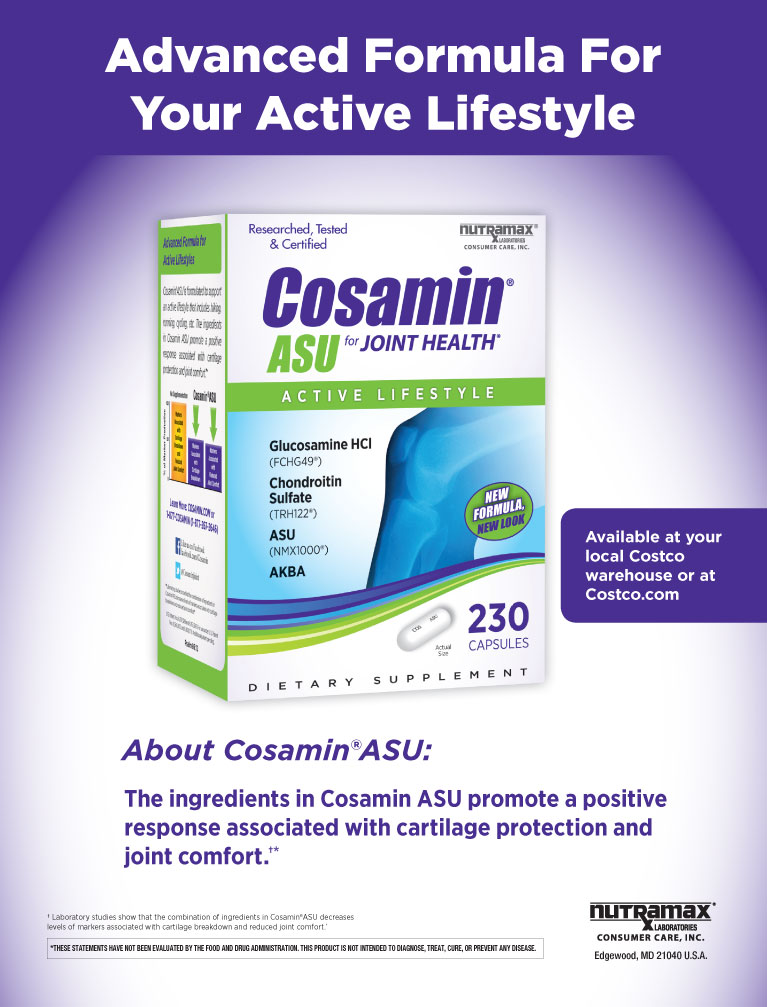

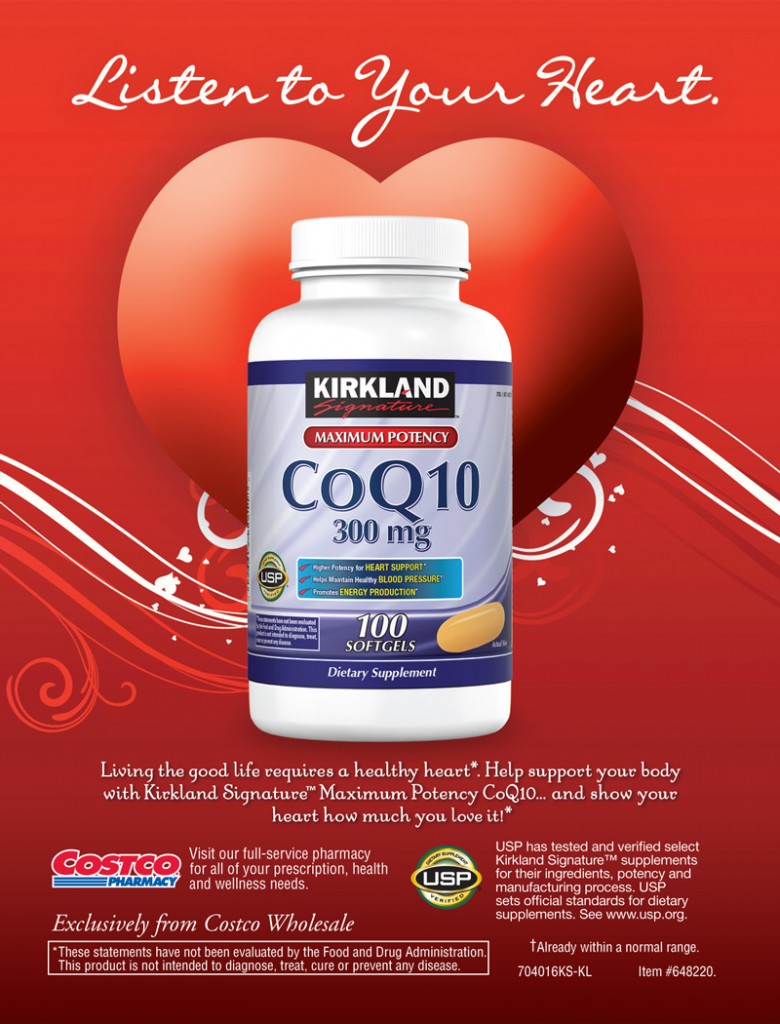
![tn_CinSulin_ad_2016[4x5]](http://www.keixun.com.cn/spring2016/wp-content/uploads/2016/01/tn_CinSulinVitBest_DigitalMay2017-400.jpg)
![tn_CinSulin_ad_2016[4x5]](http://www.keixun.com.cn/spring2016/wp-content/uploads/2016/01/tn_CinSulinVitBest_DigitalMay2017-1000.jpg)
